
Home > List > Powerboat Racing


Powerboat Racing
Powerboat racing is a sport in which ocean-going powerboats races with each other. Powerboat racing came into existence as a sport in 1904, when a race started from southeastern coast of England to Calais, France.
A combination of private funding and some commercial sponsors sponsor this amazing adventure sport. In this sport, several powerboats takes part in it from all around the world.
There are various formats of this modern era sport.
Offshore Powerboat Racing
Offshore powerboat racing is an extreme motor boat racing sport that involves the racing of powerboats on oceans. The sport originated in Great Britain in the early 20th century and is currently popular in the United States, Australia and Europe.
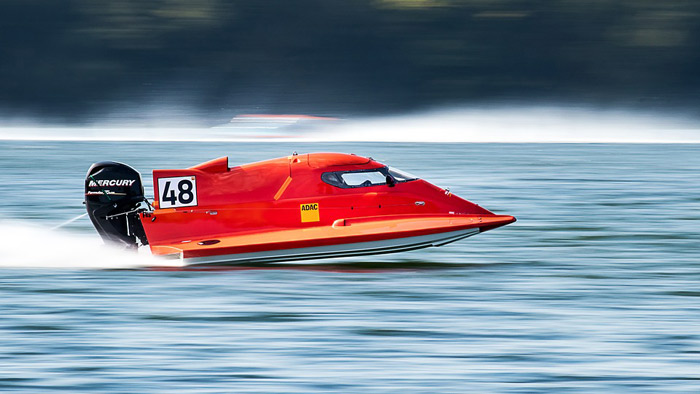
Offshore powerboats are divided into several classes based on engine capacity. The most powerful boats are classified as Class 1, which are about 12-14m long, 3.5m wide, with V12 engines, that can reach speeds of 160mph. Races are conducted on specially designed courses and involves completing a fixed number of laps. The number of laps for races will vary based on the class of the boats raced.
The three major competitions held for the sport are,
- UIM Class One World Powerboat Championship : A series of eight races for Class 1 boats, conducted in four different locations around the world. This series is the most popular racing event for the sport.
- P1 SuperStock Championship - A series of races conducted annually on the weekends, from May to October. Races are for boats that of 250+ hp class that can reach speeds of 70mph.
- UIM Powerboat GPS World Championship - A series of races for evolution and supersport class boats.
Inshore Powerboat Racing
Another form of powerboat racing is inshore racing. In thise version, the powerboats are raced in sheltered or inland stretches of water, including sheltered bays, lakes and rivers. It is often referred to as circuit powerboat racing because the races often use the format of a circuit loop, where the boats race around a circuit for a number of pre-determined laps.
Similar Sports
- Jetsprint ( Sprint Boat Racing ) - a high-speed boat racing sport in which a team of two riders, race through a course by themselves in a time-trial format.
- Jet Ski Racing — a water sport similar to powerboat racing, in which riders use jet skis to compete.
- Drag Boat Racing — drag racing that is held on the water with boats.
- More motorsports
Related Pages
- Powerboat Racing was once an official sport at the Olympic Games .
- Complete list of sports
- The Encyclopedia of Sports
Search This Site
List of sports.
- Complete Sport List
- Most Popular Sports
- What is a sport?
- Sport Categories
Sport Extra
Check out the 800+ sports in the Encyclopedia of Every Sport . Well not every sport, as there is a list of unusual sports , extinct sports and newly created sports . How to get on these lists? See What is a sport? We also have sports winners lists , and about major sports events and a summary of every year .
T.E.S. Latest
- Training Your Core
- Fitness and E-Bikes
- First Olympic Medalists
- The Games of the Future
- Rugby Six Nations
- African Games
- 2024 Major Events Calendar
Popular Pages
- Super Bowl Winners
- Ballon d'Or Winners
- World Cup Winners
Latest Sports Added
- Cricket on Horseback
- E-Bike Racing
home search sitemap store
SOCIAL MEDIA
newsletter facebook X (twitter )
privacy policy disclaimer copyright
contact author info advertising

Powerboat P1 is the fastest growing marine motorsport series in the world and has a long term commitment to growing and developing the sport of power boating at all levels. The Powerboat P1 team works closely with the sport�s governing bodies, the UIM, APBA and the IJSBA. P1 has delivered more than 85 world championship events in over twelve different countries for more than a decade.
Cookie Policy
Contact info.
- Address: 2320 Clark Street, Suite A1 Apopka, FL 32703 United States
- Phone: +1 407 985 1938
- Email: [email protected]

Cocoa Beach
Fri 17 - Sun 19, May
Lake of the Ozarks
Thu 30, May - Sat 01, Jun
Fri 09 - Sun 11, Aug
Fri 13 - Sun 15, Sep
St. Petersburg
Fri 18 - Sun 20, Oct
222 Offshore Receive UIM Class 1 Trophy In Monaco
Alex pratt returns to class 1 with dfyoung, 222 offshore take class 1 world title, this year’s uim class 1 world championship showcased the sport at its absolute best, with 222 offshore’s darren nicholson and giovanni carpitella delivering a near faultless, season-long campaign to win the title and the sam griffith trophy, the most coveted prize in world powerboat racing., doug wright powerboats to race in uim class 1 next year.

- Fri May 17 ~ Sun May 19 2024

Latest Videos
- Use Next/Prev Buttons for more
Class 1 Teams

Class 1 2022 Results
Uim class 1 results.
- 2023 Season

Keep In Touch
Get invitations to exclusive Class 1 events, watch races for free! Also get the latest on this high-octane sport!

Powerboating for Beginners: A Comprehensive Guide to the Technique and Safety of Powerboating
If you’re looking for an exciting way to spend your weekends or vacations, then powerboating may be the perfect activity for you. This water sport combines speed, adrenaline, and the beauty of the open water. However, before you rush out to buy a boat and hit the waves, it’s essential to understand the technique and safety of powerboating.
What is Powerboating?
Powerboating is a water sport that involves using a powerboat to navigate through the water. It’s a popular activity among water enthusiasts who enjoy the speed and thrill of riding on the water. Powerboats come in various shapes and sizes, from small, inflatable boats to large yachts.
Types of Powerboats
There are different types of powerboats, and each type is designed for a specific purpose. Some of the most common types of powerboats include:
Bowriders are open boats that feature an open bow area with seating in the front. They’re ideal for cruising, water sports, and fishing.
Center Consoles
Center consoles are boats that have a central console with a steering wheel and controls. They’re versatile boats that are designed for fishing, cruising, and water sports.
Cuddy Cabins
Cuddy cabins are boats that have a cabin in the bow that can be used for sleeping or storage. They’re ideal for overnight trips and cruising.
Deck boats are boats that feature a wide, flat deck and a V-shaped hull. They’re ideal for cruising, water sports, and fishing.
Fishing Boats
Fishing boats are boats that are designed for fishing. They come in various sizes and styles, from small, open boats to large, fully-equipped vessels.
High-Performance Boats
High-performance boats are boats that are designed for speed. They’re ideal for racing and water sports.
Pontoon Boats
Pontoon boats are boats that feature a flat deck and two pontoons on either side. They’re ideal for cruising and entertaining.
Safety Precautions
Before you start powerboating, it’s essential to take some safety precautions to ensure that you and your passengers are safe on the water. Here are some safety tips to keep in mind:
Wear a Life Jacket
Always wear a life jacket when you’re on a powerboat. It’s essential to choose a life jacket that fits properly and is suitable for the type of boating you’re doing.
Check the Weather
Before you head out on the water, check the weather forecast. It’s essential to avoid boating in inclement weather, such as storms or high winds.
Know the Rules
Make sure that you know the boating rules and regulations in your area. It’s essential to follow these rules to ensure that you and other boaters are safe on the water.
Use Navigation Aids
Always use navigation aids, such as GPS or charts, to navigate on the water. It’s essential to know where you are and where you’re going to avoid accidents.
Never operate a powerboat while under the influence of drugs or alcohol. It’s essential to have a clear mind and be alert when you’re on the water.
Powerboating Techniques
Powerboating requires some specific techniques to ensure that you’re safe and in control of the boat. Here are some basic techniques to keep in mind:
Throttle Control
Throttle control is essential when operating a powerboat. It’s essential to know how to control the speed of the boat to avoid accidents.
Steering is another critical technique in powerboating. It’s essential to know how to steer the boat properly to navigate through the water.
Docking is another essential technique in powerboating. It’s essential to know how to approach a dock and moor the boat safely.
Turning is a technique that requires some practice to master. It’s essential to know how to turn the boat properly to avoid capsizing or colliding with other boats.
Anchoring is essential when you want to stop the boat and stay in one place. It’s essential to know how to anchor safely and securely.
Powerboating is an exciting and thrilling water sport that can be enjoyed by people of all ages. However, it’s essential to understand the technique and safety of powerboating to ensure that you and your passengers are safe on the water. By following the safety precautions and mastering the basic techniques, you can enjoy the beauty and excitement of powerboating while staying safe and in control.
Share This Story, Choose Your Platform!
About the author: info.
Related Posts

Powerboating Safety: Everything You Need to Know

5 Tips to Safely Driving a Powerboat

Guide To Boat Safety: The Top Tips For Safe Travel

Boat Safety Checklist
Leave a comment cancel reply.
Save my name, email, and website in this browser for the next time I comment.

- Subscribe Now
- Digital Editions

Top 10 powerboat racing icons that helped make boating what it is today
- Top stories
Hugo Peel explores the top ten power-boating events, people and inventions that have influenced today’s sportsboats...
Powerboat racing may seem a world away from the type of cruising most of us do but the sportsboats we enjoy today wouldn’t be half as good as they are without the racers, designers and builders whose heroic efforts helped shape them.
Auto-boat racing, as it was originally known, traces its history back to the late 19th century and for a brief period was even an Olympic sport, with races staged off the Isle of Wight in 1908. However, it wasn’t until the 1960s and 1970s that the sport exploded in popularity as developments in engineering, materials, speed, safety and propulsion really took off.
Racing was the anvil on which these promising technologies were forged. So what are the ten most significant events, inventions and people that have contributed to today’s impressive levels of performance, safety and utility?
While many of these names and events may be unfamiliar now, they are the stuff of legend to all who recall the glory days of British powerboat racing.
1. The Cowes-Torquay-Cowes offshore powerboat race
Many people regard offshore powerboat racing as the ultimate challenge for craft and crew. Arguably the most challenging race of all and certainly one of the oldest is the legendary Cowes-Torquay competition.
Initiated in 1961 by Daily Express newspaper magnate and keen yachtsman, Sir Max Aitken, who foresaw it would help grow the UK marine industry, it bred a string of British and international heroes and brands. This 200-mile race, now known as the Cowes-Torquay-Cowes, and its coveted Harmsworth Trophy, intermittently awarded since 1903, is still the one all top powerboat racers yearn to win.
The marathon Round Britain Powerboat Race started and finished off Portsmouth
2. The marathon Round Britain Powerboat Race
If a 200-mile race sounds challenging, the 1,500-mile endurance marathon that is the Round Britain Race is on an altogether different scale, yet it proved so appealing that it has been run three times over four decades.
The first BP-sponsored race in 1969 comprised ten stages over 1,459 miles and was won by Timo Mäkinen, a champion Finnish rally-driver in Avenger Too propelled by triple Mercury outboards – he averaged 37mph.
The 1984 race was sponsored by Everest double glazing and attracted famous names, including Italian racer/designer Fabio Buzzi driving White Iveco , a single-step GRP monohull with four 600bhp Iveco diesels. Against him was fellow Italian Renato della Valle in Ego Lamborghini , an aluminium-hull craft powered by two ear-splitting 800hp, race-tuned V12 Lamborghinis.
Article continues below…
Test driving the Sunseeker Hawk 38 prototype with Fabio Buzzi
Lamborghini boat: tecnomar delivers first official ‘fighting bull’ branded yacht.
Victory went to Buzzi who, after the 157-mile Dundee-Whitby leg, during which White Iveco averaged a staggering 69 knots, dismissed it with shrug saying: ‘In Italy, this is just a cruising boat.’
The race was revived in 2008 attracting a field of 47 raceboats old and new, including a number of production RIBs and sportsboats from companies like Scorpion , Goldfish and Scanner. The favourites included Fabio Buzzi again in his classic four-engined Red FPT , and Austrian casino millionaire Hannes Bohinc in another Buzzi-designed monohull Wettpunkt .
This time the overall winner was a Greek entry Blue FPT navigated by Britain’s Dag Pike, who at 75 years old, was the event’s oldest competitor. Many of the production boats also did remarkably well, showing just how far they have come in recent years.
Steve Curtis MBE is powerboat racing royalty
3. Powerboat racer Steve Curtis
If the Cowes-Torquay-Cowes is the benchmark, surely the top driver must be found among its winners? Home-grown contenders must include Tommy Sopwith, a winner in 1961, 1968 and 1970 and the Gardner brothers, Charles and Jimmy, who clocked up victories in 1964 with their Bertram 31 Surfrider , and again in 1967 in the iconic Sonny Levi-designed Surfury .
On the worldwide stage, Italy’s Renato Della Valle won four Cowes Torquay Cowes races in a row from 1982 to 1985. Hannes Bohinc collected the trophies in 1995 and 2003 and another German, Markus Hendricks, whose boat sank on the 2008 Round Britain, took a re-engined 34-year-old monohull, Cinzano , to victory in 2009 and 2011.
They are all brilliant in their way but how could this category ignore the UK’s Steve Curtis MBE, owner of Cougar Marine, with no fewer than eight Class One powerboat racing world championships in fearsome 175mph catamarans? Curtis’s 2016 victory in the roughest ever Cowes Torquay Cowes race, in a 30-year-old aluminium boat sealed his place in the history books.
4. Lady Violet Aitken – the first lady of fast
The field of legendary female powerboat racers may be smaller but is no less worthy for it with three principal candidates – two titled British ladies and an American grandmother.
From the USA, Betty Cook – focussed, smart, and tough – arrived with her 36ft Cigarette Kaama and blew away the opposition in the 1978 Cowes Torquay Cowes race. She went on to secure two world championships.
The British aristocracy provides the eccentric and brave Countess of Arran, who fielded fast if unconventional designs of three-pointers like Highland Fling among others. She was described by The Guardian in her obituary as ‘beautiful, vivacious, funny, fun and entrancing’.
But our top female driver is Lady Violet Aitken, wife of Cowes-Torquay founder Sir Max Aitken and Ladies’ Trophy winner on several occasions. Racing is still in the blood as her daughter Laura and granddaughter Lucci are both keen powerboat racers.
Buzzi’s legendary status stems from 40 years of work in the marine industry
5. Powerboat designer Fabio Buzzi
The late Fabio Buzzi is a legend, both behind the helm and at the drawing board. In more than 40 years of activity, his company FB Design has won a staggering 52 world championships; seven Harmsworth Trophies; two Round Britains; and set no less than 56 world speed records in both European and American classes.
Buzzi designed the boat that has won more races than any other powerboat in history, the quadruple-engined, be-winged 44ft Cesa/Gancia dei Gancia . Today, the descendants of these monohull designs are found in service with government and military agencies all around the world, as well as leisure craft like the Sunseeker XS2000 and Hawk 38 .
But the competition is hard-fought. Sonny Levi’s delta-shaped race-boats A’Speranziella , Merry-go-Round , Alto Volante , and Surfury leave lasting memories by their sheer performance and poise. And their legacy, the Levi Corsair, is still made today.
The UK’s Don Shead also runs Buzzi close having designed ten Cowes-Torquay winners and the 1984 Round Britain race winner. The early Sunseeker ranges also came from his drawing board.
Peter Thornycroft and Alan Burnard merit attention as designers of the iconic Nelson and Fairey hulls respectively, many of which are still in service today. But the sheer scale of Fabio’s achievements trumps them all.
The Mercury V8 took powerboating to another level
6. The Mercury V8 engine
Early racers only had American petrol V8s for choice, mainly Ford Dearborn Interceptors, tweaked to deliver big torque and 300-400bhp. There were also a few marinised Jaguar straight-six engines, which consumed oil at a terrifying rate and were fragile. Then Carl Kiekhaefer, head of US outboard giant Mercury, refined numerous Mercury Racing V8s and Lamborghini V12s providing up to 850bhp and things took off. Literally.
To this market came car racing engineers Ilmor in the 1990s with a tuned Dodge Viper V10 engine, pushing out a reliable 700-800bhp. The Italians, at the behest of Fabio Buzzi, developed the 16-litre 1,000hp Seatek diesel for ultra-marathon events, providing unparalleled torque with (relatively) light weight and reliability.
A special mention for the maddest motors must go to Tommy Sopwith, who put a pair of helicopter turbines into a 44ft Don Shead hull delivering over 1500bhp and Domenico Achilli, who ‘glued’ two Subaru flat-four rally car engines together, and split our eardrums while winning the 1990 Cowes Torquay Cowes race.
But for sheer consistency and the countless number of ever-faster, smoother, more reliable production engines its powerboat racing successes have spawned, Mercury and its big displacement V8s have to take the crown.
Offering horizontal thrust and reduced drag, the sterndrive greatly increased the speed and efficiency of both race and pleasure craft
7. The sterndrive unit
Early shaft-driven race-boats normally placed engines amidships with straight shafts to the propellers. Then the vee-drive option enabled engines to be moved astern for better weight distribution but, in both cases, the angle of thrust was still pushing the hull ‘uphill’.
With the arrival of the sterndrive came horizontal thrust to harness the growing power of engines, and hugely reduced hydrodynamic drag by doing away with separate rudders, shafts and P-brackets. This greatly increased both speed and efficiency while the ability to trim the angle of thrust also enabled drivers to adjust the boat’s trim to suit differing sea conditions.
Surface-drives from Arneson and Trimax reduced drag even further but at the cost of low speed manoeuvrability and we mustn’t overlook the impact of the outboard engine on both race and leisure sportsboats.
However, for sheer versatility, the impact it has had on both powerboat racing and leisure craft, and its ability to work equally well with both petrol and diesel engines, the sterndrive has to take it.
Hunt’s deep-vee design proved a powerboat game-changer
8. Racing hull designer Ray Hunt
The most successful hull builders embraced the fast-developing world of engineering and materials as well as developments in design. Cold-molded mahogany plywood gave way to GRP, which in turn surrendered to carbon-fibre reinforced by Kevlar.
However, it’s hard to think of a bigger leap in hull design than Ray Hunt’s deep-vee concept, demonstrating an immediate and staggering superiority over previous hard and rounded chines. Nothing underpins this assertion better than Dick Bertram’s 1961 Miami-Nassau victory in his prototype Moppie – finishing a whole day ahead of the third-placed boat.
The likes of Levi, Shead and Bertram all helped refine the concept but the winner has to be Ray Hunt who, along with Dick Bertram’s investment and encouragement, became the grandfather of today’s sportsboats.
Peter Dredge skims Vector Martini to an average speed of 94.5mph during the 2015 Cowes Torquay Cowes race. Photo: Alamy
9. Speed record breaker Peter Dredge
World Water Speed records set by the likes of Donald Campbell’s Bluebird and Richard Branson’s Virgin Atlantic Challenger II are momentous achievements in their fields but their designs have bred few, if any, current sportsboats. Offshore powerboat racing records may not be as well publicised but are arguably far more relevant.
The average speed records of historic races like the Cowes Torquay Cowes race are a perfect demonstration of the improvements made in powertrains, hull design and strength. The first race in 1961 was won by a 24ft wooden Christina averaging 24.5mph. It took another two years to break 40mph, and a further four to exceed 50mph. In 1969 the record tumbled again with an average speed of over 60mph.
A gap of six years then ensued before the record climbed over 70mph and a further 13 years for technology to reach an average exceeding 80mph. A very calm race in 1990 saw the Italians hit over 90mph average – and then we waited 25 years before that speed was finally exceeded in 2015.
So until that record is beaten, preferably with a speed of more than 100mph, our winner is the current record holder Peter Dredge who propelled the awesome 1,500bhp, 44ft Vector Martini to victory at a remarkable average speed of 94.5mph.
Dag Pike, the brains behind so many great powerboat victories
10. National treasure Dag Pike
No top ten list could be complete without mention of those quiet but significant contributors to the sport of offshore powerboat racing. Among those names must be Class-3 racer, commentator, sport historian and MBY ’s longest-serving contributor Ray Bulman, who passed away last year .
The racer, organiser, enthusiast and flamboyant, chain-smoking Tim Powell also has to be in the running. Other characters like Commander Petroni of Italy’s Tornado Racing Team and Tommy Sopwith’s regular crew Charles de Selincourt, who guided him to victory in several Cowes Torquay Cowes races also deserve mentions.
But my National Treasure award goes to Dag Pike; writer, raconteur and navigator extraordinaire who has been the brains behind countless race wins for dozens of different drivers. Having been shipwrecked eight times himself but also having rescued more than eight people in his long career offshore, he has in his own words ‘balanced the books’.
The last word
As with any top ten list it can never be comprehensive and will always be open to differences of opinion but that’s not the point of this article. We simply invite you to ponder that, whatever boat you drive and whatever propels it, its performance and seaworthiness possesses at least some of the DNA of the many great raceboats, designers, engineers and technologies, forged in the heat of offshore battle.
First published in the June 2019 issue of Motor Boat & Yachting.
Navan S30 & C30 tour: Exceptional new Axopar rival
Axopar 29 yacht tour: exclusive tour by the man behind it, mayla gt first look: speed machine with outrageous looks, latest videos, galeon 440 fly sea trial: you won’t believe how much they’ve packed in, parker sorrento yacht tour: 50-knot cruiser with a killer aft cabin, yamarin 80 dc tour: a new direction for the nordic day cruiser.
Union internationale motonautique
What is the uim.
About the Union Internationale Motonautique
Established in 1922, the Union Internationale Motonautique (UIM) is the world governing body for all Powerboating activities. It is fully recognized by the International Olympic Committee (IOC) and it is a member of the Association of the IOC Recognized International Sports Federations (ARISF) for which UIM President, Dr. Raffaele Chiulli also serves as President. The UIM has 64 affiliated National Federations. The main disciplines of the UIM are :
- Circuit ( F1 , F2 , F500 , F4, Formula Future , etc.) - Offshore ( XCAT, Class 1, etc.) - Pleasure Navigation - Radio- controlled boats - Aquabike ( Jet ski)
- Solar & Electric
In the quest of increasing media exposure, improvement of financial independence, and geographic growth, the UIM has contracted promoters dealing with the flagship classes of its different racing disciplines such as Offshore, F1 and F2 Circuit, and Aquabike Class Pro. As the Internationally recognized authority for world power boating, the UIM is charged with protecting and building the future of the Sport on behalf of its national federations and competitors and is responsible for creating a safe, accessible, unified and thriving world renowned sport.
Our activities
Highly competitive, fascinating, intensely challenging, risky and entertaining, Powerboat Racing is the ultimate adrenalin rush and regarded as one of the most spectacular and exciting sports in the world.
Geographical growth, environmental issues, financial pressures and the quest for media exposure continue to increase the complexities of the organization’s role as it delivers governance and change.
In 2017, supported by the emergence of independent promoters across all five continents, the UIM has increased its global influence and organizes 157 races worldwide.
2023 UIM corporate brochure.pdf

PROMOTING EXCELLENCE
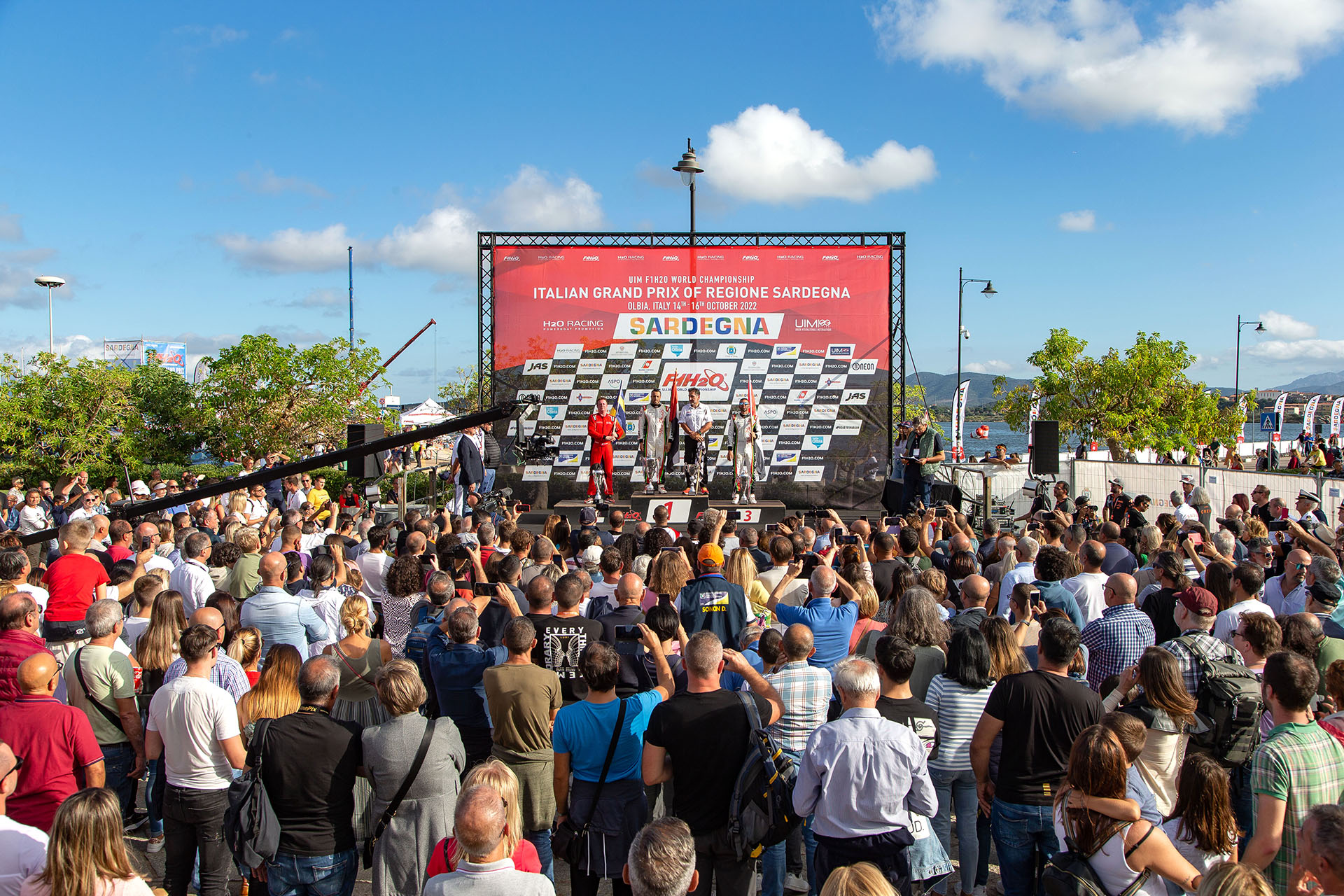
Designing live experiences
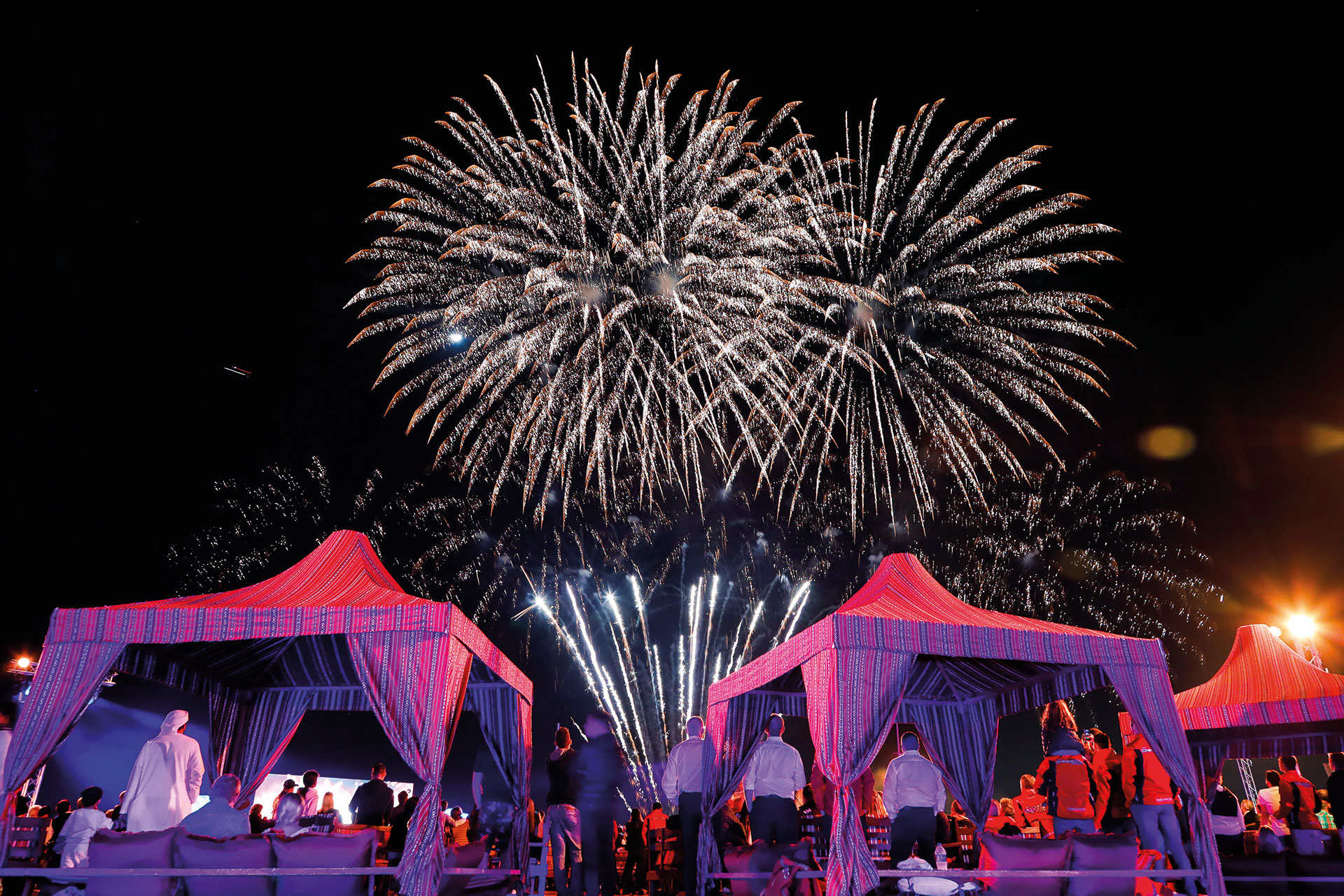

SUPPORTING DESTINATIONS
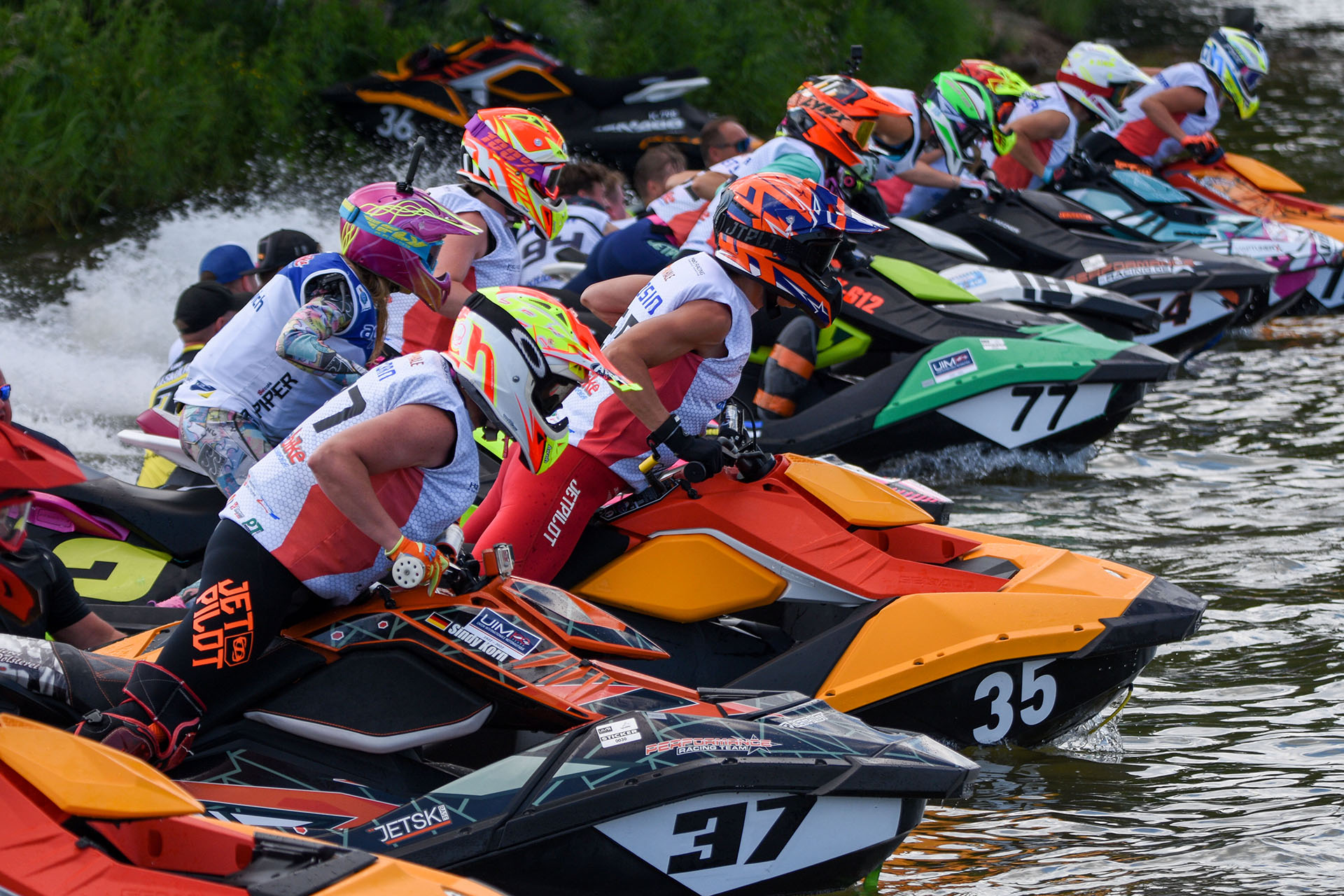
Inspiring event

THE H2O RACING ASSETS
The company brings together a group of professionals with over 30 years of experience in sport and event management to collectively manage all commercial and marketing activities across three UIM sanctioned properties:
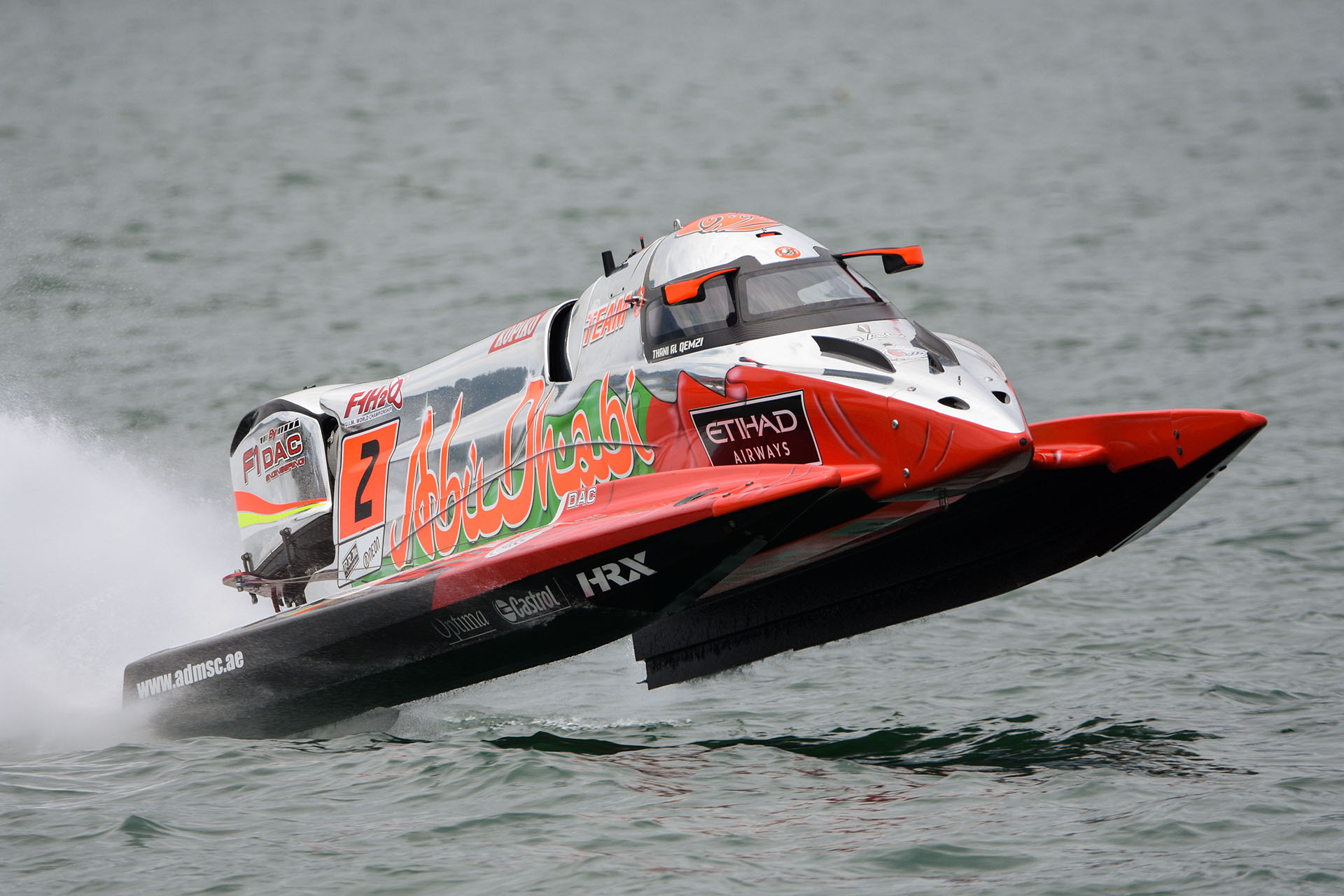
The U.I.M. F1H2O World Championship is the ‘flagship’ international series of single-seater inshore circuit Formula 1 Powerboat Racing. Highly competitive, fascinating, intensely challenging, risky and entertaining, Formula 1 Powerboat Racing is the ultimate adrenalin rush and regarded as one of the most spectacular and exciting sports in the world.
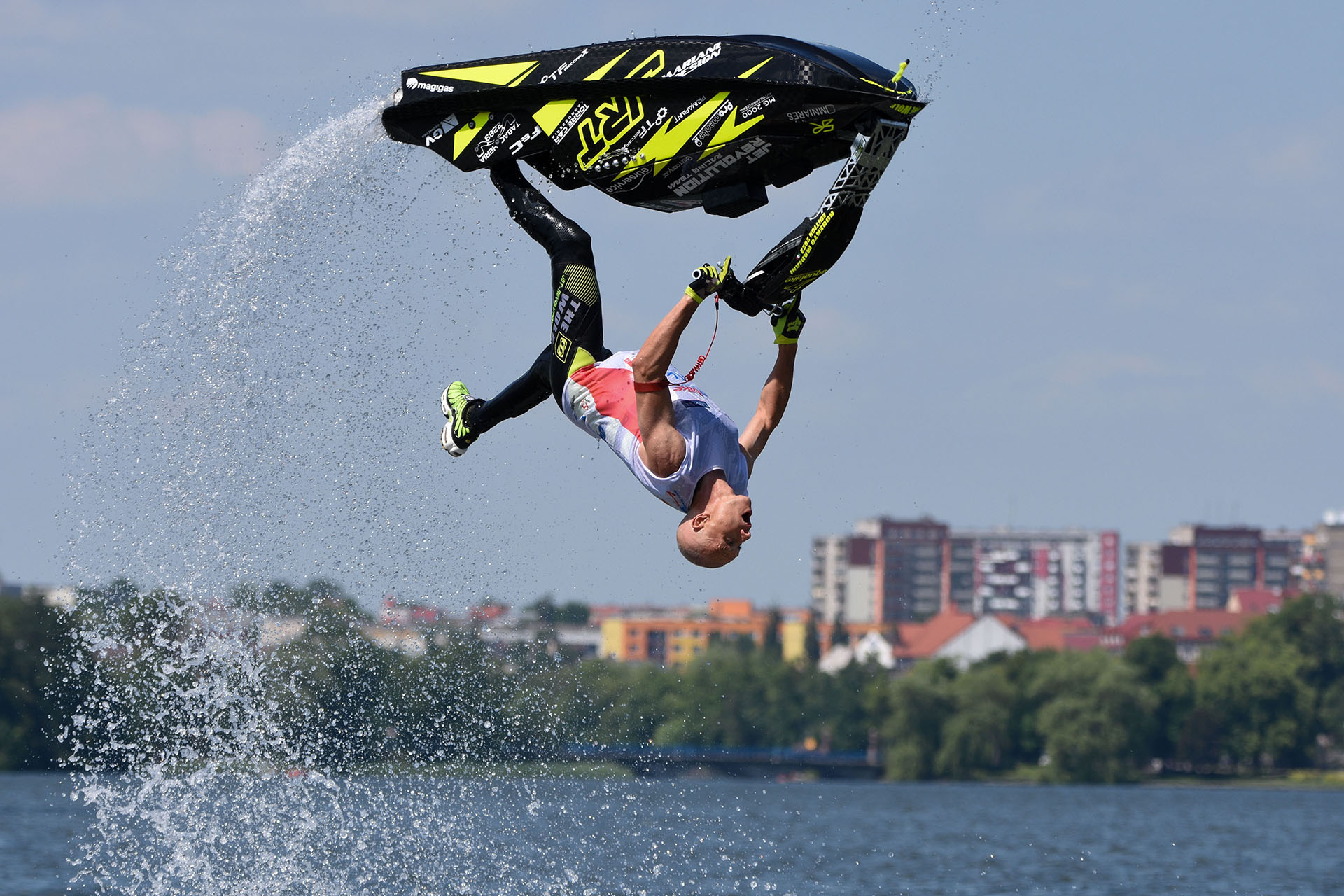
THE AQUABIKE
The UIM-ABP Aquabike World Championship is the most acclaimed and prestigious international series promoting personal watercraft in a competitive racing environment, and one of the fastest, most spectacular, demanding and entertaining sports on water.
The UIM-ABP Aquabike European Continental Championship starring the best riders of the “Old Continent”, became increasingly significant in the last years while resistence and strength are the main themes featured in the World Endurance Championship
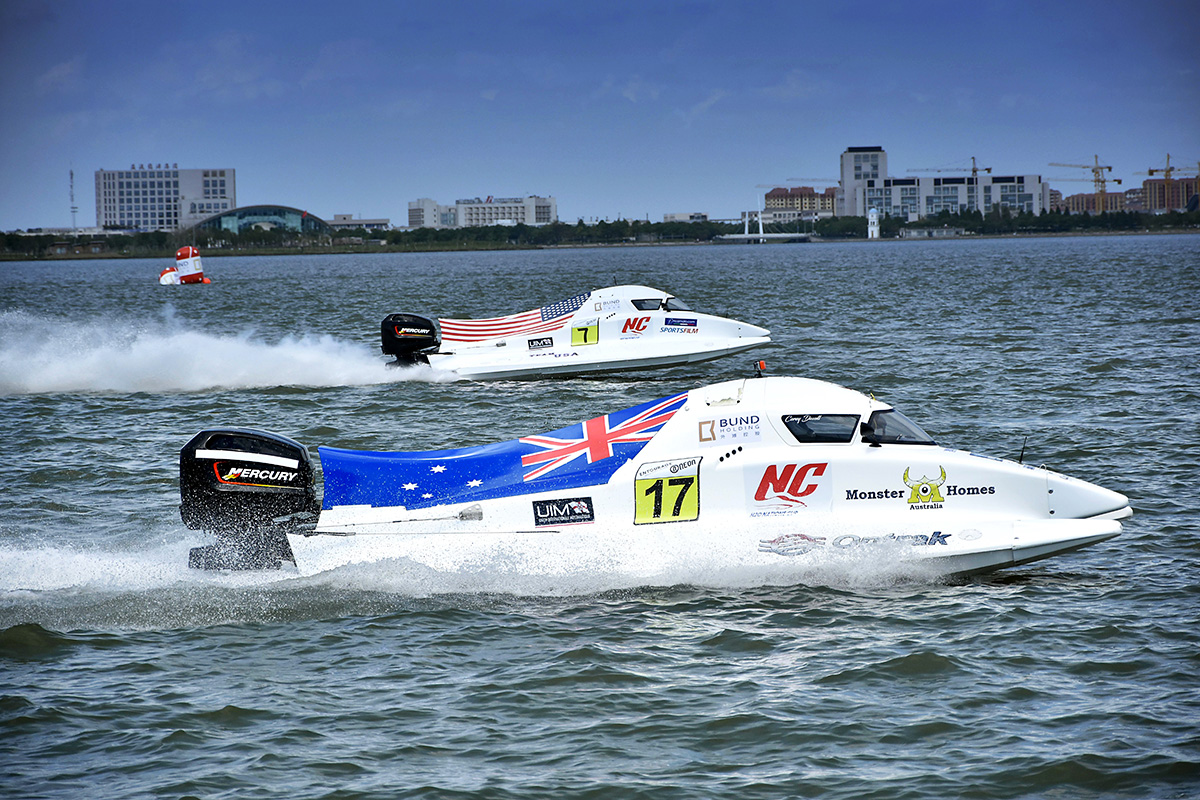
THE H2O NATIONS CUP
The UIM H2O Nations Cup is a new approach to the spectacular sport of single-seater inshore circuit racing, placing the emphasis on team participation and country success rather than that of individual driver ability and success.
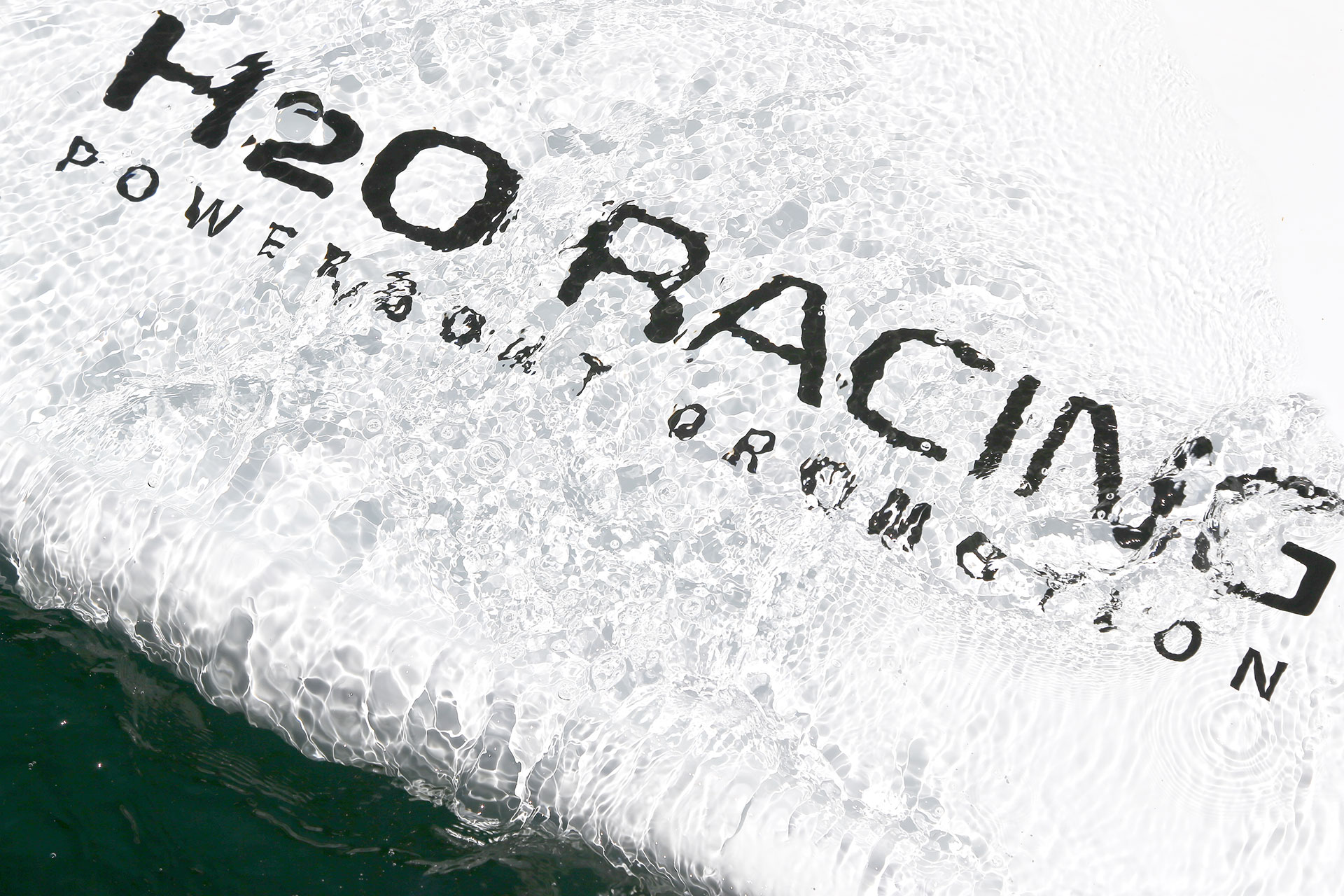
THE H2O RACING GROUP
H2o racing is a sports marketing company whose goal is to promote world championship powerboating events., h2o racing in numbers.
TOTAL broadcast hours of TV Coverage
territories BROADCASTING H2O news feed
Total number of broadcast programmes
WEB SITE Pages Views
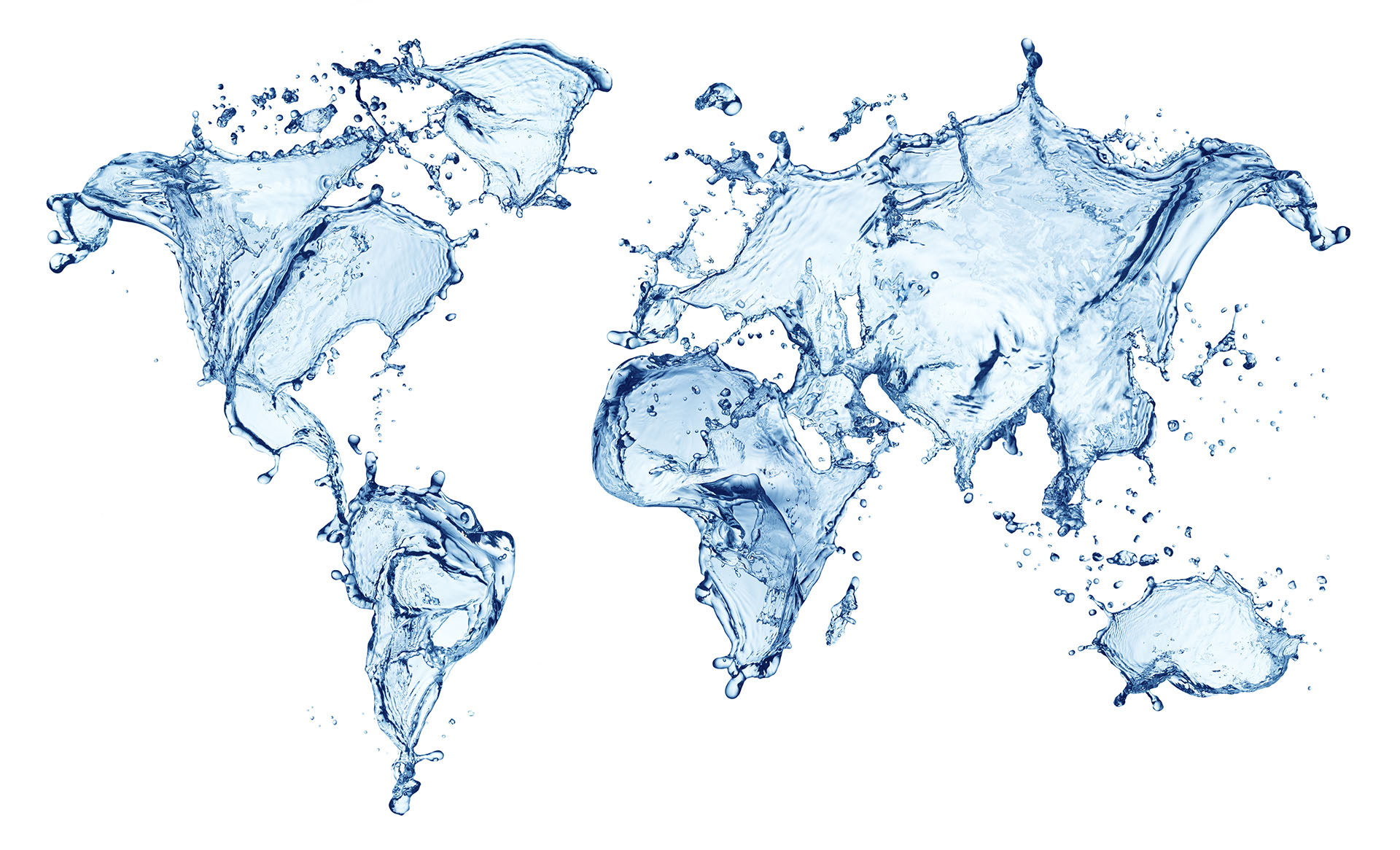
THINK GLOBAL
Our involvement with Powerboating World Championship events began in 1984. Thirty nine countries make up an extensive world atlas, confirming H2O Racing as a leading global sports events management company.
PROMOTING A DESTINATION THROUGH A H2O RACING EVENT.

Powerboating
International Powerboating Union
Uim portfolio:.
Home About US Powerboating
About US Powerboating
US Powerboating offers the nation’s best and most comprehensive on-the-water training and education courses for recreational boaters. Our hands-on courses are taught by Certified Powerboat Instructors who empower students with the skills and confidence they need to get more out of their boating experience and become safer powerboat operators. US Powerboating’s courses are offered through approved schools, community programs, clubs, and marinas.
US Powerboating is an affiliate of US Sailing , a non-profit 501(c)3 organization and the National Governing Body for the sport of sailing in the United States. US Sailing works to achieve this mission through a wide range of programs and events, geared towards providing an equal level playing field for all sailors. US Sailing sets the course enabling sailors to enjoy the sport for a lifetime.
Our Mission
Our mission aligns closely with the strategic objectives of the U.S. Coast Guard's Boating Safety Division. We aim to support them in their mission to make America's water ways safer for all and to minimize property damage, personal injury and loss of life by creating a new generation of educated and experienced recreational boaters.
Our Courses
US Powerboating's philosophy is that there is no substitute for practical, hands-on experience. After all, you wouldn't drive a car without taking driver's education so consider us your source for Driver’s Education for Boaters.
Our courses are offered at Course Providers and Powerboat Schools around the country. They are taught by knowledgeable, professional instructors who are dedicated to ensuring you get the most out of your educational experience. With offerings ranging from beginner to advanced, we are sure we have something for everyone.
We strive to emphasize the fun side of boating while ensuring that you feel safe, comfortable and confident!
If you would like to be put on a contact list when a course becomes available, please fill out this form .
Copyright ©2018-2024 US Powerboating. All rights reserved. Website designed & developed by Design Principles, Inc.
- Powerboating News
- PBN Playmates
- Brownie’s Bites
- New Products and Offers
- PBN Classifieds

Speedboat Magazine Acquires PowerboatNation.com
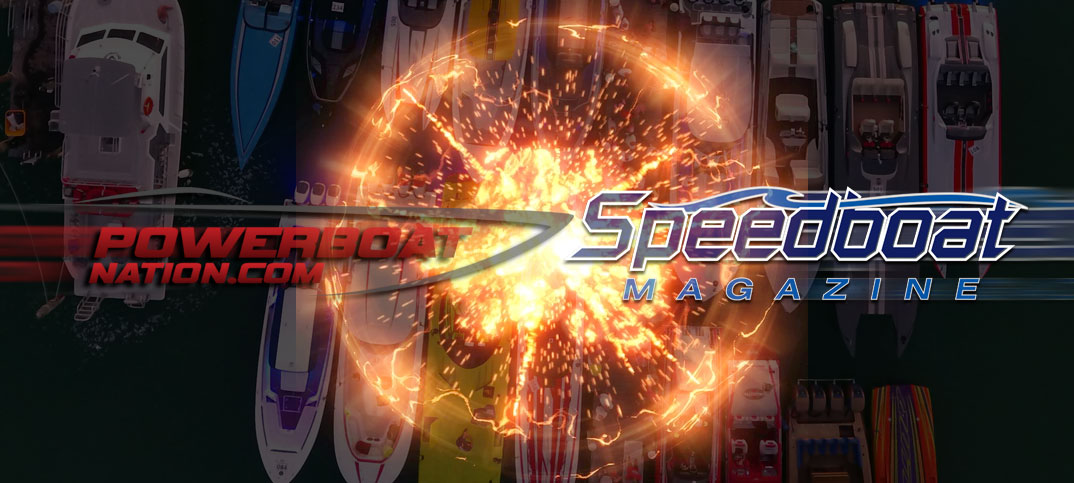
LOS ANGELES, Calif. (Aug. 1, 2018) — The strategic pairing of Speedboat Magazine’s extensive audience with PowerboatNation.com’s enormous online presence will bring one of the largest powerboating multimedia sources to the marine industry. The acquisition will pair the traditional print magazine platform with the ultimate on-demand online web presence — including iOS and Android mobile devices — with future distribution slated via Apple TV and Roku on the horizon.
Speedboat Magazine Publisher Ray Lee announced the acquisition of PowerboatNation.com, one of the world’s foremost publishers and distributors of powerboating online media. The move builds on the recent announcement underlining the company’s commitment to establishing an unrivaled powerboating resource for fans around the world.
Reflecting on the merits of the acquisition, Lee said, “We have been the staple of the powerboating sport for over four decades, and we’re really excited to expand the availability of this treasury of content to our audiences through PowerboatNation’s platform capability. This is a significant move that will allow us to bring a universe of exclusive powerboating content to our worldwide audience via both our print magazine and PowerboatNation.com.
Speedboat Editor Brett Bayne, who has been part of the team since its inception, said he welcomed opportunity to see the two entities join forces to become an unrivaled media source in the powerboating world. The agreement, he pointed out, “will result in numerous investments and virtually guarantees the creation of jobs. There’s a great strategic alignment between Speedboat and PowerboatNation’s capacity to put our rich repository of content in front of millions more fans. The synergy will be outstanding.”

PBN's FINEST

Fountain Announces New 42′ Lightning

Offshore Racing Legend Bobby Moore Passes Away at 80

P1 Superstock Looks Ahead to 2020 Season
Popular categories.
- Powerboating News 1704
- Daily Dose 187
- PBN Staff Photos 65
- Brownie's Bites 53
- New Products and Offers 31
- PBN Tech 20
- PBN Photo Gallery 20
- Privacy policy
- Advertising
30 Different Types Of Water Sports And Water Activities You Must Try This Summer
February 11, 2024
Founder, Kayaking & Paddle Boarding Expert
Sam is the founder and editor of WaterSportsWhiz. With over 20 years of experience across various water sports, he provides trusted reviews and expert advice to help others pursue their passion for getting out on the water. When not working, you can find him kayaking, paddle boarding, or planning his next water-based adventure with family and friends.
Read Our Editorial Guidelines

Do you know what I love the most about water sports – besides the cool relief of jumping into the water on a summer day, that is?
The mind-blowing level of versatility they offer.
Hear me out:
You get to have fun – and lots of it – in, on, and under the water.
Now, name any other kind of activity that allows you to do that. I’ll wait.
Yeah, I figured you’d stay silent. That is because nothing beats water sports in that department – and I say that with the risk of sounding biased.
Anyway, with summer around the corner, I figured it might be a good idea to put together a complete list of different types of water sports and activities you could try. Let’s get to it!
Surfers catch ocean
Individual Water Sports
1. scuba diving .

I’m sure you’ve heard of scuba diving; it’s one of the fastest-growing water sports – and one that’s on everyone’s bucket list.
Did you know that the term “SCUBA” is an acronym that stands for Self-Contained Underwater Breathing Apparatus , though? That’s what separates scuba diving from “free diving,” which, by the way, is also on my list.
It involves using specialized breathing equipment and carrying your own breathing gas. That, in turn, grants you more independence and more time to explore the otherwise unattainable world below the water surface.
It genuinely feels like you’re exploring a whole new planet. If you’d like to kick it up a notch and go where very few have gone before, you could try cave diving – but do note that it carries some risk due to the extreme environment with no direct vertical access to the surface.
While it’s technically not illegal to go scuba diving without a certificate, I still recommend that you complete the necessary training. It isn’t something that you can just figure out on your own.
You can find more info on CMAS’s official website .
2. Free Diving

How long can you hold your breath?
I’m asking because – well, this water sport is going to push your abilities to the absolute max, and then some.
I mean, it’s called “breath-hold diving” for a reason.
You don’t get a breathing apparatus as you would for scuba diving. Instead, you dive on a single breath and hold it until you resurface again – which, by the way, requires an incredible amount of mental and physical control.
Underwater diving has formed the foundation of other water sports, such as underwater hockey, synchronized swimming, and spearfishing, to name a few.
Free diving can be both a recreational and a competitive water sport, with the primary governing body being the CMAS . It encompasses a range of disciplines, including constant weight-free diving, free immersion diving, no-limits freediving, and static and dynamic apnea.
3. Cliff Diving

If you love being in the water – but don’t feel that simply swimming or diving gives you an adrenaline rush you’re after – cliff diving might be right up your alley.
It’s daring, thrilling, and, quite frankly, awe-inspiring. And for a moment there, you’ll get a chance to feel as if you’re actually flying – before plunging into the water.
There’s nothing quite like it, and the rush you get is insane.
Cliff diving is certainly not for the faint-hearted. But if you’re into extreme sports, you’ll be glad to know that you don’t need much to get started. There is no specialized equipment, either. It’s just you, a body of water, and a natural feature, like a cliff, to take the leap from; that’s it.
What’s interesting is that this extreme sport is much older than you’d assume:
It can be dated back to 1770, when a Hawaiian chief, King Kahekili, took a dive from the 63-foot cliffs of Kaunolo and entered the water without making a splash.
It surged in popularity following the 1968 International Cliff Diving Championship. Then, in 1996, the World High Diving Federation was formed – and today, this sport is governed by FINA .
4. Water Skiing

Water skiing is an on-the-surface water sport where the person wears a pair of skis and is pulled by a high speed boat – or a cable ski installation – over a body of water. Alternatively, you can use a single ski – known as a water slalom – or skip the skis altogether and go barefoot skiing.
While water skiing sounds like a relatively recent invention, the sport has been around since the 1920s:
Ralph Samuelson and his brother, Ben, invented the sport in 1922 using a pair of boards as skis and a regular clothesline as their tow rope.
Talk about humble beginnings, huh?
Water skiing gained quite a bit of popularity over the years – and today, this sport’s governed by the International Waterski & Wakeboard Federation . It has appeared in every major water sports championships, and following the 1972 demonstration done at the Olympic Games in Munich, it was recognized by the Olympic Committee, as well.
5. Jet Skiing

While it’s technically called jet skiing, this water sport has very little in common with water skiing, the sport I mentioned earlier.
There are no water skis involved. Instead, you’re riding a small jet-propelled watercraft, which is essentially a water-friendly equivalent of a motorcycle, using it to travel across the surface of the water.
So, why the name, then?
Well, “Jet Ski” is actually the name of the personal watercraft designed and manufactured by the Japanese company Kawasaki. It simply grew into a generic term over the years.
While it is widely regarded as a recreational activity for tourists, many are now starting to see jet ski racing as a serious competitive sport, thanks to competitions like the World Beach Games. If you wish to know more, check out the International Jet Sports Boating Association site; they’re the main governing body for all forms of personal watercraft competitive racing.
I should mention that the minimum age for driving applies to jet skiing, too. But if you are looking to make it a family activity, you can bring your kids along for the ride.
6. Swimming

Okay, let’s get back to the basics – swimming. I know you know what it is and how it works, but it wouldn’t hurt to share a brief definition:
Swimming is an activity where you use your entire body to move through the water.
That was simple, huh?
Whether you choose to do it as an individual or team sport, or even a purely recreational activity, swimming is the second most popular form of exercise – and one with quite a long history.
We (meaning humans) have done it for thousands of years. And it is the only water activity you’ll see in the animal kingdom, too.
It emerged as an actual competitive sport in England back in the 1830s. And by 1896, when the first modern Olympic Games took place, men’s swimming was recognized as an Olympic sport – with FINA , the highest governing body, formed in 1908.
Women’s swimming was introduced shortly after, in 1912.
7. Kayaking
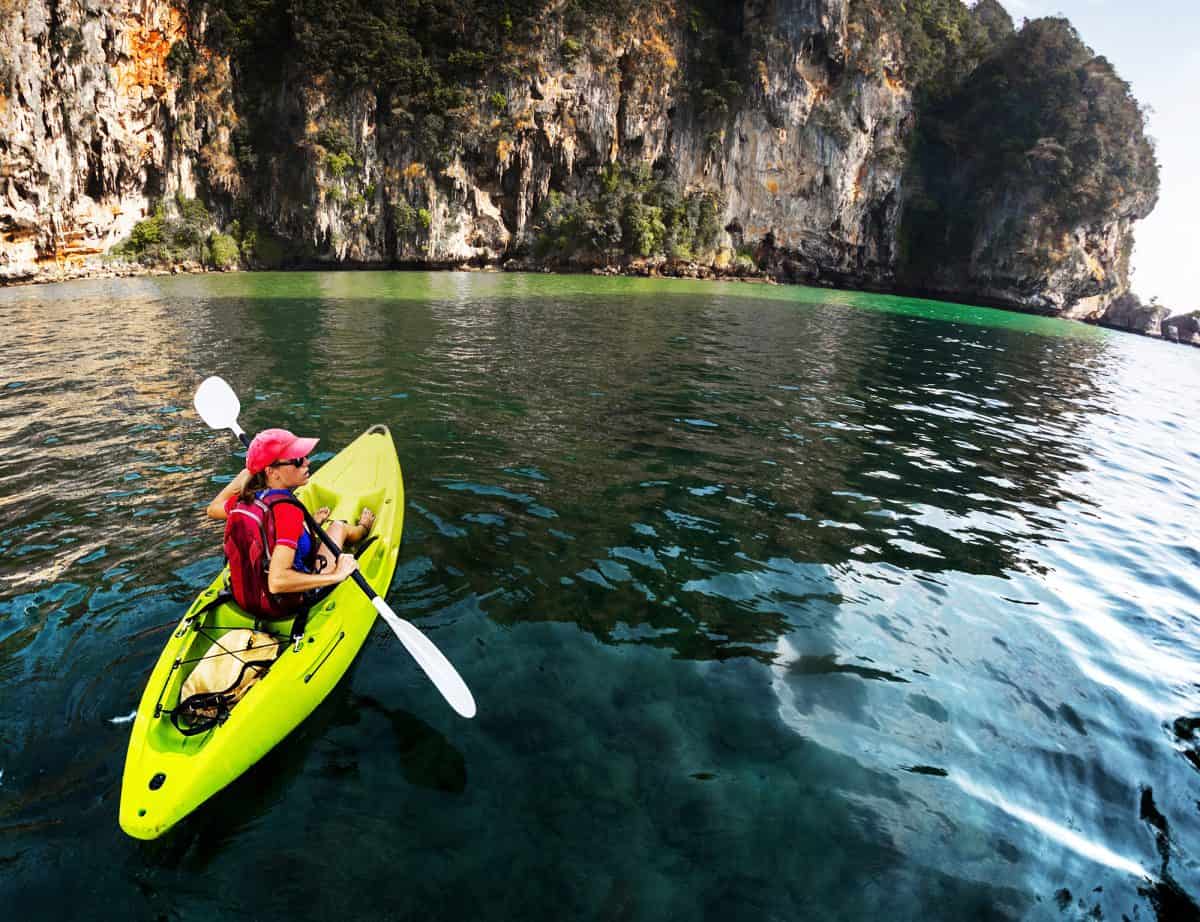
Kayaking is defined as – well, using a kayak to move across the water. It is characterized by a small, narrow watercraft that sits low in the water and the use of a double-bladed paddle.
Kayaks have been around way longer than most people realize. They were invented by the Inuit people and used more than 4000 years ago.
Of course, kayaks served a practical purpose back then. There was no mention of “kayaking” as a recreational activity until the mid-1800s and early 1900s.
Kayaking was first introduced as a demonstration sport in 1924 – and finally became an official Olympic sport in 1936.
It’s now among the fastest-growing water sports in the world.
And the best part is that you can make it as challenging – or as relaxing – as you want. There are many different variations of the sport, from recreational paddling to long-distance touring and whitewater kayaking .
You can learn all about it on International Canoe Federation’s website and discover places to go kayaking here .
8. Canoeing

Similar to – but not quite the same as – kayaking, canoeing is a paddle sport that involves paddling a canoe (well, duh!) using a single-bladed paddle. While kayaking and canoeing seem relatively similar at first, there’s a clear distinction:
Canoes are much bigger and have a spacious, open deck. Also, in a canoe, the paddler kneels – or sits on a bench, higher above the water – and uses a single-bladed paddle with a T-shaped knob to propel it.
Just like kayaking, it’s an ancient mode of transportation; the oldest examples of canoes can be dated some 10000 years ago. It was introduced as a recreational sport in the 19th century and became part of the Olympic Games in 1936.
The governing body for the sport is ICF , with the ACA (American Canoe Association) being the oldest paddle sports organization in the US.

Using a board to ride waves in an upright position – that would be the most basic explanation of what surfing is. Given that it’s one of the most well-known surface water sports in the world, I’m pretty sure you knew that already.
While wave-riding is an old practice with roots in Peruvian and Polynesian cultures, surfing only began to develop as a sport in the 19th and 20th centuries. George Freeth (1883-1919) is often called the “Father of Modern Surfing.”
Speaking of modern-day surfing, it was only recently recognized by the IOC, or the International Olympic Committee – in 2016, to be exact – and first appeared at the Olympic Games in 2020.
It is governed by the International Surfing Association – although many view it more as a lifestyle than an actual competitive sport.
“Surfing is life; the rest is details.”
10. Stand-Up Paddle Boarding

Stand-up paddle boarding is a water sport born from surfing – except here, you stand on a larger board and use a paddle to propel yourself through the water.
I can’t tell you who invented paddle boarding; I’m not sure anyone can. What I can say is:
It’s an activity with a long history, dating all the way back to 3000 BC.
The growing popularity of surfing made room for experimenting, and in the 1940s, Hawaiian surf instructors began using paddles (albeit occasionally) to steer their boards. However, SUPs only reached California in 2004 – thanks to Rick Thomas, who brought stand-up paddle boarding into the public eye.
Modern stand-up paddle boarding is still pretty young – but it has a growing fanbase around the globe.
You can learn more about the anatomy of a paddle board here . As for more general information about the sport, check out International Surfing Association’s website .
11. Windsurfing

Now, what the heck is windsurfing?
In short, it’s a water sport that combines the elements of surfing and sailing into one. So, you get a board with a sail attached to it – and use the power of the wind to propel it forward.
Sounds fun, huh? That’s because it is!
Learning the basics isn’t hard, and you have so many fun maneuvers to try – and find your own style.
The history of the sport isn’t absolutely clear. But modern-day windsurfing – as we know it today – was actually invented in 1966 in California.
Windsurfing was officially recognized as an Olympic sport at the 1984 Summer Olympics in LA – and today, it’s governed by the International Windsurfing Association .
12. Wakeboarding

I’m guessing you’re familiar with snowboarding? Well, let’s just say that wakeboarding would be the summer-friendly, on-the-water equivalent of snowboarding – except it also requires a boat to pull you and a rope to hold onto as you go.
That’s actually where the name comes from:
You stand on a wakeboard, holding onto the rope, and are towed behind a motorboat, riding on its “wake” – the waves created by the moving boat.
So, in a sense, it’s like surfing – but you get a little help from a boat.
And sure, you might fall the first few times you try to get up. But once you get the hang of wakeboarding basics, you can start performing different tricks, too.
Feel free to check out the International Waterski & Wakeboard Federation’s site for more info on getting started.
13. Kitesurfing

What do you get by mixing a little bit of surfing, wakeboarding, windsurfing, paragliding – with some skateboarding sprinkled on top?
The answer is – kitesurfing, also known as kiteboarding.
This wind-powered water sport uses a parachute-type kite and a board to propel you across the water. The “surfing” part of the name might be misleading; you don’t really need any waves. You can just harness the power of the wind.
Kitesurfing has its roots in the south of France, where Dominique and Bruno Legaignoux began using a dual-line kite while water skiing around the late 1970s and early 1980s.
The early prototypes of kiteboarding equipment, developed in the 1990s, caught the attention of water sports enthusiasts in Maui, who helped turn it into one of the fastest-growing water sports. And soon after, in 1998, they held the first-ever kiteboarding competition, too.
There are now some 1.5 million kite-surfers around the globe that enjoy this action packed water sport, with the International Kiteboarding Association as the main governing body.
14. Skim-Boarding
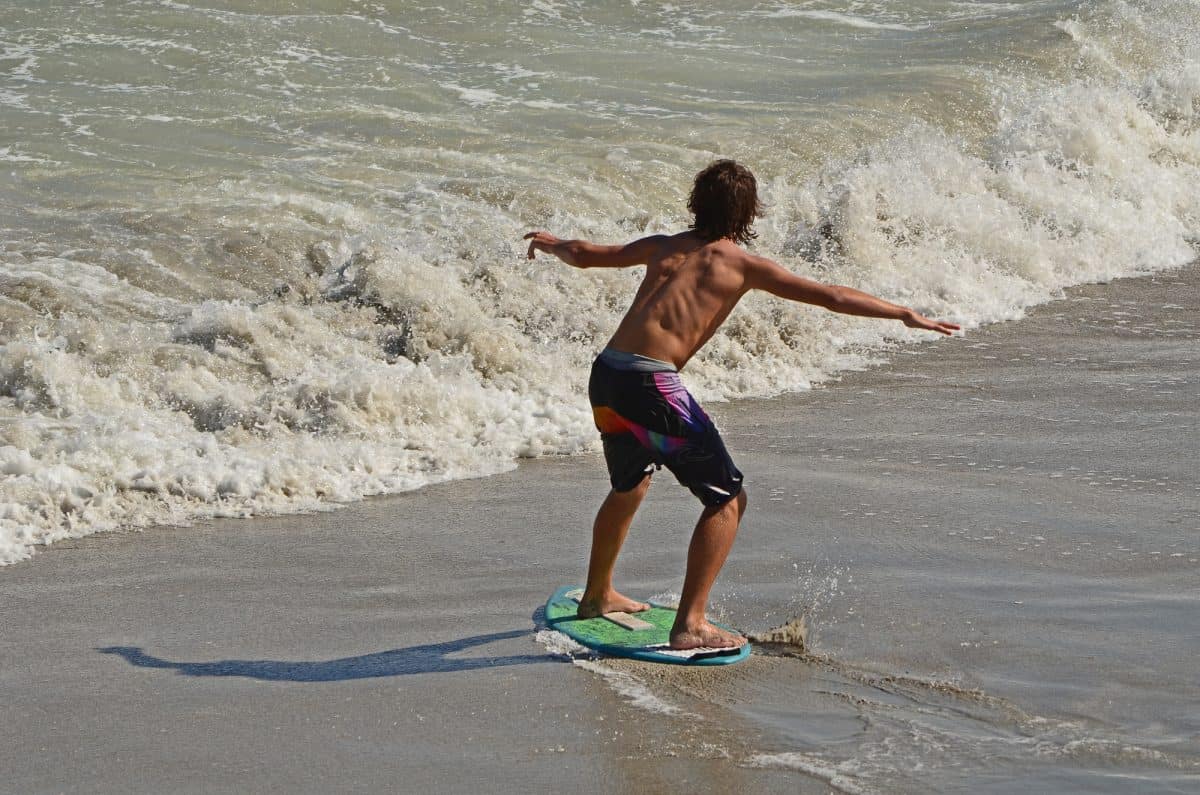
If you’ll be taking a trip to a coastal destination this summer, be sure to give skim-boarding (also known as sand skimming) a try. It’s a lot like surfing – but far less technical:
You essentially use a smaller, surfboard-looking kind of board to “surf” in shallow water, catching waves as they begin to roll out near the shore. It’s simple; you just run along the beach, drop the board onto the thin layer of water, step on it – and ride it out.
The best part is that skim-boarding carries little to no risk. You’re in very shallow water, near the shore – and even if you do fall, you’ll land on the soft, wet sand. That makes “skimming” suitable for people of all ages and skill levels.
This unique boardsport first became popular in the 1920s in California when two Laguna Beach lifeguards, George Griffeth and his friend, Jimmy, made wooden disks and used them to skim on the surface of water across the wet sand.
It’s governed by the International Surfing Association – but it’s the only one under ISA’s umbrella that still doesn’t have a proper World Championship.
15. Bodyboarding
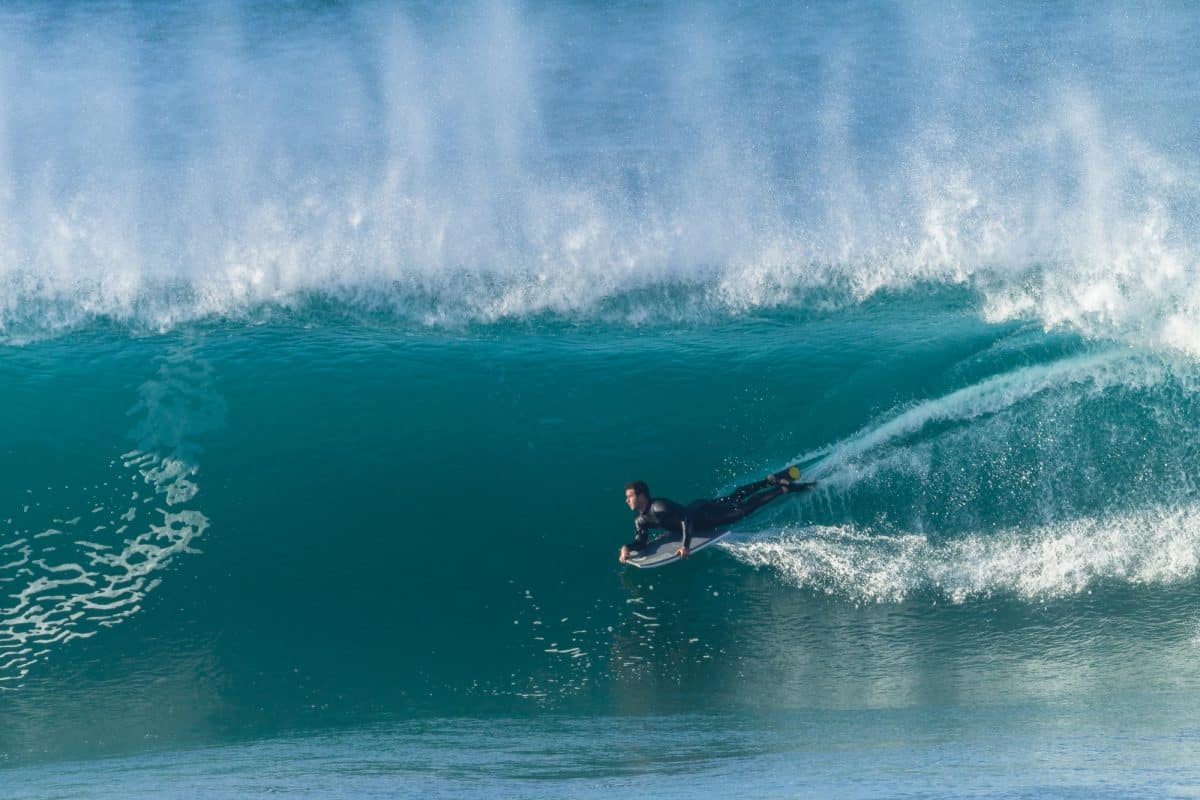
Not too confident in your ability to ride the waves while standing up on a surfboard? That’s fine; you don’t have to get up. Bodyboarding – also known as boogie boarding – will be a much better fit for you.
You’re still technically catching waves on the board – except, in the case of bodyboarding, you’re in a prone position, lying on the board.
The practice of catching waves lying down seems to have its roots in the Pacific islands, where the Polynesian people used to ride waves on their paipo boards in a prone position.
Bodyboards were first made in 1971 in Southern California, though. Thanks to the advancement of boogie boards, today, we use flexible, square-nosed boards that measure between 33 and 46 inches.
Much like other board sports I’ve mentioned, bodyboarding, which became a competitive sport in 1982, is governed by the International Surfing Association .
Team Water Sports
16. water polo.

When it comes to popular team water sports, water polo is the undisputed king.
Don’t let the name confuse you, though. This sport has a lot more in common with football than it does with polo. In fact, many referred to it as “football in the water” back in the day.
It’s a competitive team water sport – with two teams of seven players – where you score goals by throwing the ball into the other team’s goal. It requires speed, strength, and, above all, excellent teamwork.
Water polo has its roots in 19th century Scotland – with the first official set of rules introduced in 1885. It was also one of the first team sports to be included in the modern Olympic games, with the men’s water polo team making its debut in 1900.
Women’s water polo teams had to wait another 100 years to be recognized as an Olympic sport, only joining the Games in 2000.
There are several governing bodies of water polo – including the NCAA and IOC. FINA remains the main one, though.
17. White Water Rafting

If you have a rushing mountain river nearby and you are looking for an on-the-water activity that will deliver a jolt of adrenaline, I highly recommend whitewater rafting.
It’s a great way to immerse yourself in your surroundings and soak up the scenery as you – and the rest of your group, along with a guide – navigate the river rapids in an inflatable raft. Teaming up with others to keep your raft on course also promotes bonding and makes it an unforgettable experience for families and groups of friends.
Don’t worry; you will also get the necessary safety gear – including helmets and PFDs – and can choose a suitable class of rapids based on your group’s experience.
Modern whitewater rafting can be dated back to the 1800s and the first attempts to navigate the Snake River in Wyoming. However, it wasn’t until the 1960s that actual rafting companies began to form.
And in 1972, whitewater rafting made its debut at the Munich Olympic Games.
The International Rafting Federation (IRF for short) oversees all aspects of this sport – including recreational and competitive whitewater rafting.

“Row, row, row your boat, gently down the stream,” goes the nursery rhyme. But there is nothing gentle about rowing as a competitive sport.
The concept is simple:
You’re using oars to propel your boat from one point to another at high speed – and the goal is to win the race.
Rowing has been around for thousands of years. Ancient Egyptians, Greeks, and Romans used it as a means of transportation, but it developed into a sport in the 17th and early 18th centuries in England – and it was included in the Olympics in 1900.
Today, you have 150 national rowing federations across the globe, with the main governing body being the World Rowing Federation , previously known as FISA.
19. Synchronized Diving

I would say the idea behind synchronized diving (or synchro diving, as it’s also known) is pretty self-explanatory:
Two divers perform a dive at the same time, from the same level board – most commonly, it is a three-meter springboard or a 10-meter platform – with the primary goal being that they remain in sync the entire time.
Synchronized diving has been around for decades now. However, it wasn’t officially recognized as a real sport until the mid-1990s:
It was internationally introduced at the FINA World Cup in 1995 and was adopted as part of the Olympic program in 1999, making its debut at the 2000 Olympic Games in Sydney.
It became an instant hit among other divers and spectators alike.
The sport is governed by FINA ; you can find more info on their official website.
20. Synchronized Swimming

Synchronized swimming is a relatively new discipline – and one that’s a lot more artistic in nature than most other water sports. In fact, it used to be known as “water ballet.”
After the 2016 Rio Olympics, FINA , the governing body, officially changed the sport’s name to “artistic swimming.”
While those participating in synchronized swimming manage to make it look easy and graceful, performing their choreography with a smile on their face, it’s actually one of the most strenuous and physically demanding sports.
Don’t believe it?
In terms of aerobic capacity, synchronized swimmers are second only to long-distance runners – and that tells you a lot about the abilities of these athletes.
Annette Kellermann was the first to perform water ballet in a glass tank in 1907, popularizing the sport with the first synchronized swimming competition held in the US in 1939.
Interestingly enough, men were banned from competing for most of the 20th century. They were allowed to compete in the European Aquatics Championships in 2016 but remained banned from the 2016 Summer Olympics.
21. Underwater Hockey

Yeah, it’s a thing.
I laughed at a guy at the bar once because he said he was on an underwater hockey team; I figured he was messing with me. Well, guess what?
I was wrong.
Underwater hockey is actually a globally-recognized, limited-contact underwater sport, invented in the 1950s by the British Navy as a way to keep divers fit and improve their performance underwater.
The first World Championship was held in 1980 in Canada. Today, it’s a sport that’s played in more than 20 countries around the globe, governed by CMAS .
It’s the same thing as hockey – but it’s played underwater, as in, the players are moving the puck (a heavier one, made of lead and coated in plastic) along the bottom of the pool.
There are two teams – ten members each – but only six can be in the water at a time; the other four are interchangeable players.
If you have a large enough group of friends, access to a pool, and the right gear, give it a try this summer!
22. Underwater Rugby
Given that underwater hockey is a genuine sport, you shouldn’t be too shocked about the whole underwater rugby thing.
It’s a full-contact, fast-paced team sport played in a deep pool, with two teams of six players and six substitutes each, aiming to score goals by throwing the ball in the opponent’s basket, which is located at the bottom of the pool.
The origins of the sport can be dated to the 1960s when the German Underwater Club (DUC) in Cologne came up with the underwater version of the ball game. It quickly spread to other Nordic countries. Today, it’s also played in North America, South Africa, Australia, and New Zealand.
Underwater rugby was first recognized as an official sport in 1978 by CMAS – which remains the main governing body for the sport – with the first World Championship held in 1980.
23. Sailing

Sailing is another water sport you could try this summer. And no, I don’t mean the version where you get a multi-million dollar yacht and a crew that caters to your every need – while you sit back and relax in the sun.
I’m referring to a highly strategic sport that relies on the wind to “power” the sails and propel the boat across the water.
Sailing became a sport during the early 17th century, but until the 1950s, it was reserved for the wealthy. The introduction of cheaper and easier ways to build boats finally made it accessible to the general public.
World Sailing is the governing body for sailboat racing and is in charge of organizing the Sailing World Championships (Sailing World Cup), held every four years. The sport is also officially recognized by the IOC – the International Olympic Committee – making its Olympic debut in 1900.
24. Powerboating
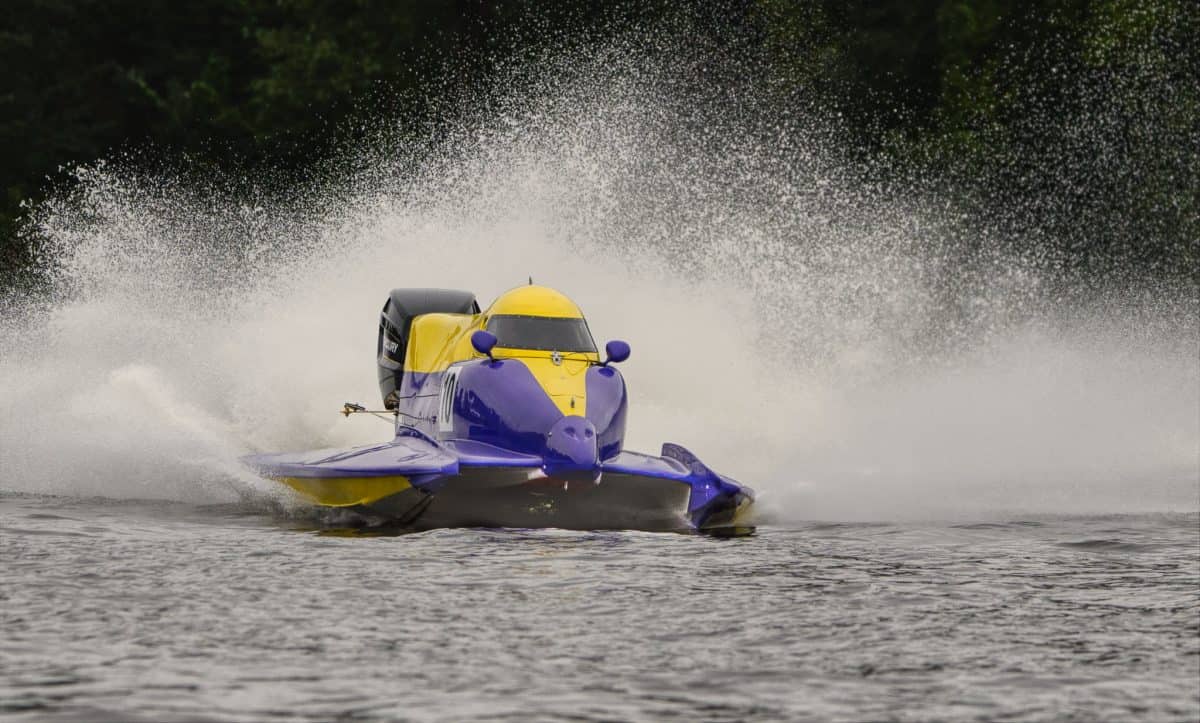
Okay, I admit – “powerboating” is a bit of an umbrella term:
It refers to any activity that involves a motorized boat – which includes everything from bay boats and bowriders to cruisers and high-performance boats. Either way, if you love a good adrenaline rush, speed, and the thrill of racing, powerboating is the right water sport for you.
The first powerboat can be dated back to 1886 – with the first powerboat race taking place in 1903. Even more so, the sport became a part of the Olympic Games soon after, in 1908.
Today, it is governed by the Union Internationale Motonautique . There are multiple international events held every year, with F1 H2O and Class 1 World Powerboat Championship being among the biggest ones in the world.
Recreational Water Sports
25. water aerobics.

Whether you choose to call it “water aerobics,” “waterobics,” “aquatic fitness” – or one of the many nicknames it goes by – the concept remains the same:
Water aerobics is defined as performing aerobic exercises in relatively shallow water, usually a swimming pool.
There’s no actual swimming involved, though.
Instead, it is a type of resistance training that’s easier on the joints – and puts you at a lower risk of injuries than the “land-based” version. It relies on the water’s resistance to work your muscles – and since the resistance’s there in both directions of the movement, it targets opposing muscle groups.
And that means you get double the benefits – for the same amount of effort.
If you’re considering taking up water aerobics this summer, you can find more information on the Aquatic Exercise Association’s website .
26. Snorkeling

The ocean is a whole new world for you to explore, full of wonders hidden just below the water’s surface. And the best way to get a glimpse of it all (without having to use full-blown scuba diving gear) is snorkeling.
It’s defined as swimming on – or through a – body of water while wearing a diving mask, snorkel, and fins and observing the underwater features and sea life.
You don’t even need to gear up as heavily as you would for scuba diving. All you really need are goggles, a snorkel, and a pair of flippers – and you can get started.
Another plus?
It’s a family-friendly activity, suitable for kids and parents alike.
While snorkeling is an activity on its own, governed by CMAS , it also serves as a foundation for other sports, including scuba diving, spearfishing, and free diving.
27. Spearfishing

I would say this activity has a lot more in common with hunting than fishing. I mean, sure, you’re still technically catching fish, but how you go about it (and the equipment you use) makes all the difference.
I’m talking about a completely hands-on approach to landing a catch here:
This ancient method of fishing (seriously, it has been around for millennia) involves using a sharp, pointed object, such as a spear, harpoon, or gig, either thrown by hand or launched with a spear gun, to impale the fish.
If you’re looking for an alternative to casting your line and waiting for the fish to bite – this could be it. You can find more info on International Underwater Spearfishing Association’s website ; it’s the main governing body of modern spearfishing, implementing regulations and keeping track of world spearfishing records.
Despite the efforts made in the 1960s, it’s not recognized as an Olympic sport, though.
28. Underwater Photography

Okay, okay, before you start arguing that underwater photography is not technically a spot, allow me to say that I agree. It’s not a sport; it’s just a process of taking photographs under the water – and it’s done for both scientific and artistic purposes.
So, why does it get a spot on this list, then?
Well, for one, it’s usually done while scuba diving – and in some cases, snorkeling or freediving – which all count as actual water sports. Plus, it is not as easy as jumping into the water with your camera; underwater photographs are much harder to take.
But if you’re already an avid diver with an interest in photography, consider taking your camera – a waterproof one, of course – with you under the surface. I can guarantee that you’ll be blown away by the stunning shorts you take during your next dive.
You can learn more on CMAS’s official website .
29. Canyoning

Canyoning, also known as canyoneering, is a recreational activity that involves using a range of different techniques to traverse narrow passageways made up of rock formations and water.
It’s about exploring hard-to-reach areas – and conquering vertical obstacles by jumping from one rock formation to another, walking, sliding, and swimming – as you descend through the gorge.
You can approach canyoning as a fun, adventure-packed hobby or an extreme sport – and is probably the least complicated extreme sport on our list. But either way, you’ll become a member of the tight-knit community of canyoners open to newcomers.
Do note that canyoning requires quite a bit of equipment, though. You’ll need a wetsuit, gloves, a helmet, rope and carabiners, a harness, and a sling, among other things.
The best times for canyoning are from May to September.
So, if that seems like something you’d be interested in, check out FIC’s official website for more info.
FIC was formed in 2003 and is the main governing body for canyoning today. However, in 2014, the International Association of Amateur Canyoning (IAAC) was created to oversee the aspects of recreational canyoning.
30. Fishing (Angling)

Did you seriously think I’d forget about fishing?
Long before it became a recreational activity, fishing was a means of survival and catching your next meal – just like hunting. In fact, humans were already catching fish 40000 years ago. Today, fishing can also be done recreationally and for commercial purposes.
There are many fishing tournaments held around the globe, all coordinated by the Congress of the International Sport Fishing Confederation as the main governing body.
It’s worth adding that “fishing” is an umbrella term here, covering a wide range of different styles and techniques – including fly fishing, ice fishing, kayak fishing, netting, and big-game fishing, to name a few.
You’ll discover some fantastic new places to go fishing here , but be sure to check local licensing laws and regulations beforehand.
30 Different Types Of Water Activities & Sports To Try: Summary
If you’re looking for new water sports and activities to try this summer – alone or in a group, as a hobby or competitively – be sure to consider some of the following:
- Scuba diving
- Free diving
- Cliff diving
- Water skiing
- Jet skiing
- Swimming
- Kayaking
- Canoeing
- Surfing
- Stand-up paddle boarding
- Windsurfing
- Wakeboarding
- Kitesurfing
- Skim-boarding
- Bodyboarding
- Water polo
- Whitewater rafting
- Rowing
- Synchronized diving
- Synchronized swimming
- Underwater hockey
- Underwater rugby
- Sailing
- Powerboating
- Water aerobics
- Snorkeling
- Spearfishing
- Underwater photography
- Canyoning
Meet the Team
Affiliate disclosure.
Privacy Policy
Cookie Policy
Editorial Process
WaterSportsWhiz
2892 N Bellflower Blvd #1026 Long Beach, CA 90815 United States
+1 (562)-283-4796
We use cookies on this site to optimize site functionality and give you the best possible experience. By using this site, you accept our use of cookies. Read Our Policy
© Copyright 2019 - 2024 - WaterSportWhiz.Com

Home Recreation US Powerboating
US Powerboating
Get out of the classroom and behind the wheel us powerboating offers the nation’s best and most comprehensive hands-on boating courses..
Whether you’re looking for your first experience at the helm or aiming to improve your skills, we can help. As the National leader in on-the-water powerboat training and education our goal is to empower students with the skills and confidence they need to get more out of their boating experience and become more comfortable behind the helm.
Visit US Powerboating for more information
US Powerboating is an affiliate of US Sailing, the National Governing Body for the Sport of Sailing in the United States.
Safety at Sea
- Safety at Sea Planning
- Hosting a US Sailing Championship

Andrew Clouston SVP Programs & Services Email Andrew Clouston

Betsy Alison Adult Director Email Betsy Alison 401-342-7914

Diana Emmanuelli Competition Manager Email Diana Emmanuelli 401-342-7912
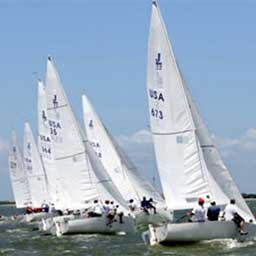
Karen Davidson Adult Program Coordinator Email Karen Davidson (401) 342-7934
Copyright ©2018-2024 United States Sailing Association. All rights reserved. US Sailing is a 501(c)3 organization. Website designed & developed by Design Principles, Inc. -->

By Tim Banse
Boat test #1654.
Aquila, renowned for its fleet of power cats, redesigned its 32 Sport Power Catamaran for the 2021 model year. Notable upgrades include a longer waterline which improves the ride and frees-up cockpit space. Also new, the fixed swim platform incorporates a ladder for easy access to the water. Forward, an open bow lounge features twin chaise lounges replete with fold-up armrests fitted with a pair of stereo speakers and cup holders. A quick-deploy sunshade shelters loungers from the sun as needed. A wraparound, walk-through, windshield separates the bow lounge from the cockpit and its two-person helm bench. Companion seating resides to port. In the cockpit we find a sink, freshwater mixer, an electric grill and a stainless-steel fridge just off the companionway. Overhead a fiberglass hardtop replete with sliding hatches, provides shelter for folks seated on dual transom benches. Aquila’s 32 is a sport boat. Think performance raw, bloody performance. Nonetheless, it boasts accommodations for spending the night on board in goodly comfort. Below decks sleeping quarters include a double berth, hull-side glass with opening port, an overhead hatch and stowage cabinetry. The starboard side houses a wet head with ventilation and light-enhancing hull-side glass. Air conditioning is optional, either running off shore power, or an optional generator set. This cabin is no claustrophobia-inducing, dark cave. Typical of a catamaran, the beam is broad, paying big dividends in performance, handling and roominess. On a power cat, outboards hang wider apart on the transom, lending better directional control. Know that a catamaran’s two hulls draw less than a mono hull, making them adept at exploring shallower waters. Twin Mercury 225 hp engines are standard power, with twin 300-hp Mercury Verados optional. In this model the outboards are re-positioned further aft for a quieter voice print. Almost 30% faster and fuel efficient with the Hydro Glide Foil System, available as an option. Hull and deck are constructed of composite vinylester resin and multi-directional fiberglass cloth. During layup, the coring is infused with resin under vacuum, a method which draws precise amounts of resin through the fibers to ensure a lightweight, durable hull and deck structure.
Specifications Overall Length: 9.86 m / 32’ 4” Beam Overall: 3.85 m / 12’ 8” Hull Draft with Outboards up: 55 cm / 1’ 10” Displacement Dry: 6,850 kg / 15,100 lbs. Sleeps: 4 (2 in salon) Max Passengers: 22 MSRP: approx. $285,000 USD For more information: www.marine360.ca , www.aquilaboats.com
Related Post
The 2024 alumacraft fsx, intrepid powerboats introduces new 41 panacea and 43 nomad se/fe models, cruisers yachts 42 gls ob.
Moscow City Shooting Sport Club

- Park Pobedy • 6 min walk

Most Recent: Reviews ordered by most recent publish date in descending order.
Detailed Reviews: Reviews ordered by recency and descriptiveness of user-identified themes such as wait time, length of visit, general tips, and location information.

Also popular with travelers

Moscow City Shooting Sport Club - All You Need to Know BEFORE You Go (2024)
- Fri - Fri 10:00 AM - 11:00 PM
- Sat - Thu 10:00 AM - 11:45 PM
- (0.16 mi) Hostel on Generala Ermolova
- (0.16 mi) Hostel Salute
- (0.19 mi) Fili
- (0.21 mi) Kruazi Mini Hotel on Kutuzovsky
- (0.27 mi) Versal' na Kutuzovskom
- (0.16 mi) Restaurant 18.12
- (0.20 mi) Poklonka Bar
- (0.22 mi) Shokoladnitsa
- (0.30 mi) LoveCraft
- (0.87 mi) KT Biro

IMAGES
VIDEO
COMMENTS
2023 UIM Driver and Junior Driver of the Year - Winner Announcement. The Union Internationale Motonautique (UIM) is delighted to announce that Jessica Chavanne from France and Simon Jung from Slovakia have been elected 2023 UIM Driver of the Year and 2023 UIM Junior Driver of the Year respectively. see details. ">.
Powerboat Racing. Powerboat racing is a sport in which ocean-going powerboats races with each other. Powerboat racing came into existence as a sport in 1904, when a race started from southeastern coast of England to Calais, France. A combination of private funding and some commercial sponsors sponsor this amazing adventure sport.
The UIM Class 1 World Powerboat Championship (also known as Class 1) is an international motorboat racing competition for powerboats organized by the Union Internationale Motonautique (UIM). It is the premier class of offshore powerboat racing in the world.. Class 1 is considered one of the most spectacular marine motorsports. A Class 1 race-boat has twin inboard 1100hp engines and can reach ...
Class1 offshore powerboat. Offshore powerboat racing is a type of racing by ocean-going powerboats, typically point-to-point racing.. In most of the world, offshore powerboat racing is led by the Union Internationale Motonautique (UIM) regulated Class 1 and Powerboat P1. In the US, offshore powerboat racing is led by the APBA/UIM and consists of races hosted by Powerboat P1 USA.
222 Offshore Take Class 1 World TItle This year's UIM Class 1 World Championship showcased the sport at its absolute best, with 222 Offshore's Darren Nicholson and Giovanni Carpitella delivering a near faultless, season-long campaign to win the title and the Sam Griffith Trophy, the most coveted prize in world powerboat racing.
US Powerboating is an affiliate of US Sailing, the National Governing Body for the Sport of Sailing in the United States. Who We Are Our Mission Our Courses. Whether you are a lifelong boater looking to brush up on your skills or have never been on the water before, we have opportunities available for you! ...
What is Powerboating? Powerboating is a water sport that involves using a powerboat to navigate through the water. It's a popular activity among water enthusiasts who enjoy the speed and thrill of riding on the water. Powerboats come in various shapes and sizes, from small, inflatable boats to large yachts. ...
Racing is still in the blood as her daughter Laura and granddaughter Lucci are both keen powerboat racers. Buzzi's legendary status stems from 40 years of work in the marine industry. 5. Powerboat designer Fabio Buzzi. The late Fabio Buzzi is a legend, both behind the helm and at the drawing board.
About the Union Internationale Motonautique . Established in 1922, the Union Internationale Motonautique (UIM) is the world governing body for all Powerboating activities. It is fully recognized by the International Olympic Committee (IOC) and it is a member of the Association of the IOC Recognized International Sports Federations (ARISF) for which UIM President, Dr. Raffaele Chiulli also ...
Our involvement with Powerboating World Championship events began in 1984. Thirty nine countries make up an extensive world atlas, confirming H2O Racing as a leading global sports events management company. THROUGH A H2O RACING EVENT. H2O RACING IS A SPORTS MARKETING COMPANY WHOSE GOAL IS TO PROMOTE WORLD CHAMPIONSHIP POWERBOATING EVENTS.
The UIM is the world governing body for all Powerboating activities. It is fully recognized by the International Olympic Committee (IOC) and is a member of the Association of the IOC Recognized International Sports Federations (ARISF) and of GAISF for whom the UIM President serves respectively as President and Vice President.
Thomas Kurth. Replaced. Union Internationale du Yachting Automobile. (founded) 1922. Official website. www .uim .sport. The Union Internationale Motonautique ( UIM) is the international governing body of powerboating, based in the Principality of Monaco. It was founded in 1922, in Belgium, as the Union Internationale du Yachting Automobile.
US Powerboating's courses are offered through approved schools, community programs, clubs, and marinas. US Powerboating is an affiliate of US Sailing, a non-profit 501(c)3 organization and the National Governing Body for the sport of sailing in the United States. US Sailing works to achieve this mission through a wide range of programs and ...
August 2, 2018. LOS ANGELES, Calif. (Aug. 1, 2018) — The strategic pairing of Speedboat Magazine's extensive audience with PowerboatNation.com's enormous online presence will bring one of the largest powerboating multimedia sources to the marine industry. The acquisition will pair the traditional print magazine platform with the ultimate ...
Either way, if you love a good adrenaline rush, speed, and the thrill of racing, powerboating is the right water sport for you. The first powerboat can be dated back to 1886 - with the first powerboat race taking place in 1903. Even more so, the sport became a part of the Olympic Games soon after, in 1908.
As the National leader in on-the-water powerboat training and education our goal is to empower students with the skills and confidence they need to get more out of their boating experience and become more comfortable behind the helm. US Powerboating is an affiliate of US Sailing, the National Governing Body for the Sport of Sailing in the ...
By Tim Banse. You've probably noticed the global shift towards electric power. The revamped Brio pontoon series, redesigned for 2022, follows that trend. Princecraft built some of the first electric pontoons on the market. For 2022 they've revamped their Brio, renaming it Brio 2.0.
Aquila's 32 is a sport boat. Think performance raw, bloody performance. Nonetheless, it boasts accommodations for spending the night on board in goodly comfort. Below decks sleeping quarters include a double berth, hull-side glass with opening port, an overhead hatch and stowage cabinetry.
On June 4, International Competitions «62nd Grand Moscow Regatta», organized with the support of Moscow City Department of Sports in the year of the 100th anniversary of Moscow Sport, ended at the Rowing Canal Moscow. This year's competitions were dedicated to the 85th anniversary of three-time Olympic champion Vyacheslav Ivanov.
In 1979, the Soviets even opened their national multi-sport festival to athletes from across the world. Known as the "Spartakiade", the event boasted more competitors than the Olympics.
About. We have one and the only 100 meter shooting range in Moscow. Professional instructors with more than 10 years of experience. We have more than 300 units of firearms. We are situated at a walking distance from the metro station Park Pobedy. We have a free and secure car park. We have the best collection of firearms from The First World ...
On May 28, International Fencing Competitions Moscow Sabre 2023, organized with the support of the Moscow City Department of Sports in the year of the 100th anniversary of Moscow Sport, finished at the Irina Viner-Usmanova Gymnastics Palace. Moscow Sabre celebrated its 50th anniversary this year and was dedicated to the memory of two-time ...